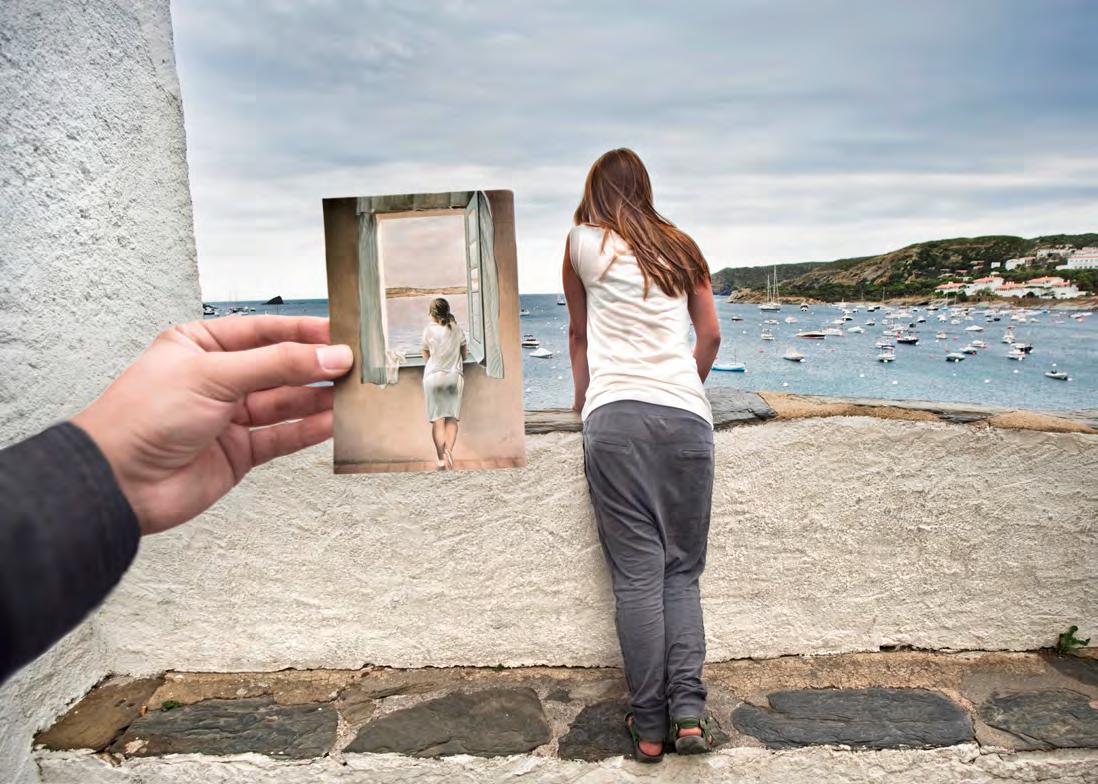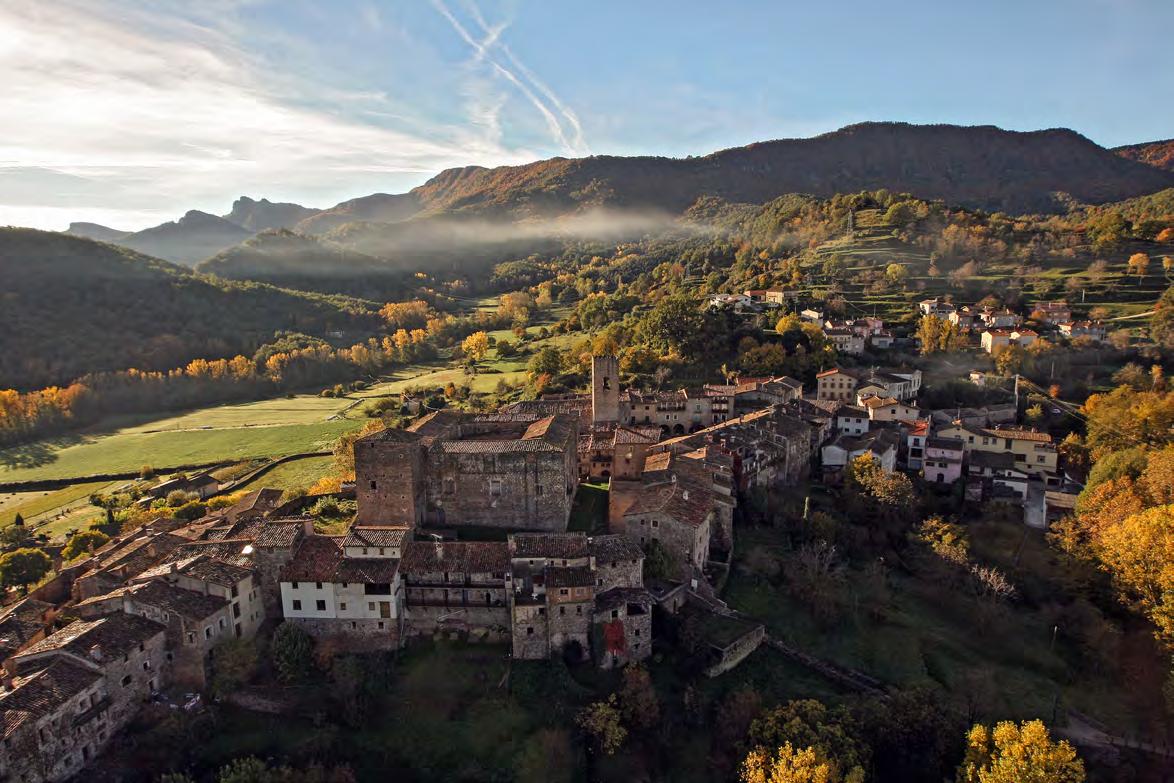Culture and identit y *



*Where the land speaks of roots, festivals and genius





*Where the land speaks of roots, festivals and genius

The Mediterranean is the most patient of sculptors; its tumbling waves have been shaping the Costa Brava with wisdom and perseverance since the dawn of time. To see the tenacity of its swell, one only has to travel along this coastline from north to south, from Portbou to Blanes.
Stretching 200 kilometres, it is scattered with secluded beaches and sheer cliffs, from the Albera mountain range and the Cap de Creus headland with its crashing surf. Land and sea playfully intertwine and merge together, forming a symbiosis that has contributed to the brilliance of the area, inspiring writers, poets, musicians and artists throughout history.
Man has enjoyed a close relationship with this coastline since ancient times. The Iberians, Greeks and Romans learned to exploit this close bond with the sea. For thousands of years, fishing, agriculture and trade brought wealth to the area, and the legacy
of this relationship is clear to see in much of the local culture. A distinctive cuisine has also emerged from the land and sea based on local produce, a cuisine that has stood the test of time and has been reinvented thanks to the genius of chefs such as the Roca brothers or Ferran Adrià.
Today, visitors can attend prestigious musical festivals, enjoy the essence of popular traditions, discover historical cities and charming villages, or visit museums, monuments and archaeological sites that trace the history of humanity from prehistoric times to the Industrial Revolution.
If you are keen to embark on this voyage of discovery, climb aboard with us and enjoy the rolling swell of this intense and eternal Mediterranean, a source of wonderful ancient stories and the inspiration for the most extraordinary artistic creations.
Stretching 200 kilometres, it is scattered with secluded beaches and sheer cliffs, from the Albera mountain range and the Cap de Creus headland with its crashing surf.

If the Mediterranean is the cradle, the Pyrenees constitute the spinal column of the region. Although the Pyrenees today form an administrative border with France, there was a time when a common land was forged on both sides of the mountain range.
It was at the foot of these mountains where the history of Catalonia was written and where the first Catalan counties were formed to control feudal lands. This mountainous territory has produced legends of maids, knights, vassals and pilgrimages. It was also here where the most beautiful monasteries of the Romanesque period were built and where some of the most important manuscripts in Europe were produced, read by kings and popes.
At the turn of the 20th century only the well-to-do could afford the luxury of a stay in the Pyrenees. Leaving the industrial cities behind them, the bourgeoisie travelled to the mountains, a paradise of fresh air, pleasant strolls, modernist second homes and water cures in spas.
Just like the trees that grow there, the Pyrenees spread their roots. Scattered throughout the area are small towns in which the traditional architecture and peaceful way of life of the Pyrenees are preserved, making this an ideal setting for mountain tourism. This becomes clear to visitors as soon as they set off along the paths and roads that lead there, admiring the wonderful scenery of an area where outdoor activities can be enjoyed together with cultural heritage, gastronomy, shopping and traditional celebrations that have been declared festivals of national interest.
All sorts of options are available to mountain lovers in a land shaped by volcanoes, valleys, peaks, snow and hospitable towns.
That very human instinct to seek out paradise has not disappeared; on the contrary, it is possible for everybody to enjoy it and appreciate the beauty and importance of the heritage preserved in the Girona Pyrenees. To discover it, all you have to do is embark on the path that starts here.
All sorts of options are available to mountain lovers in a land shaped by volcanoes, valleys, peaks, snow and hospitable towns.

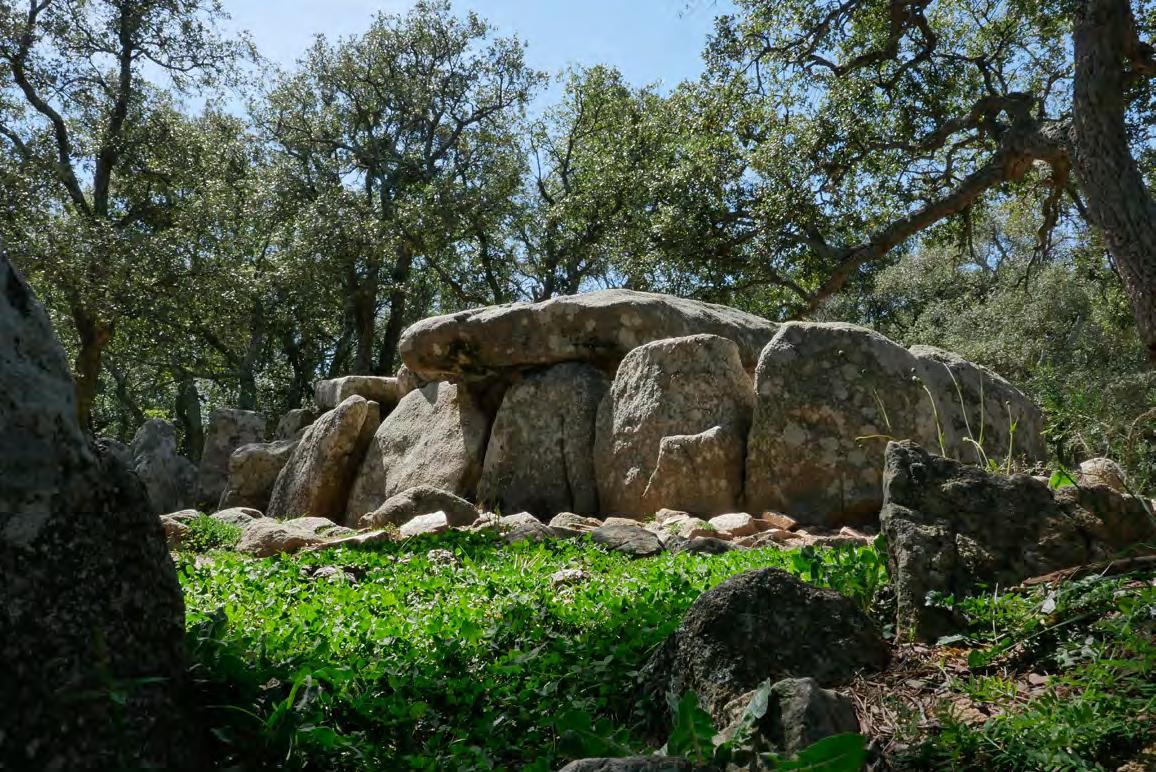
Discover the first cultures that settled in the area Roots and ancestors
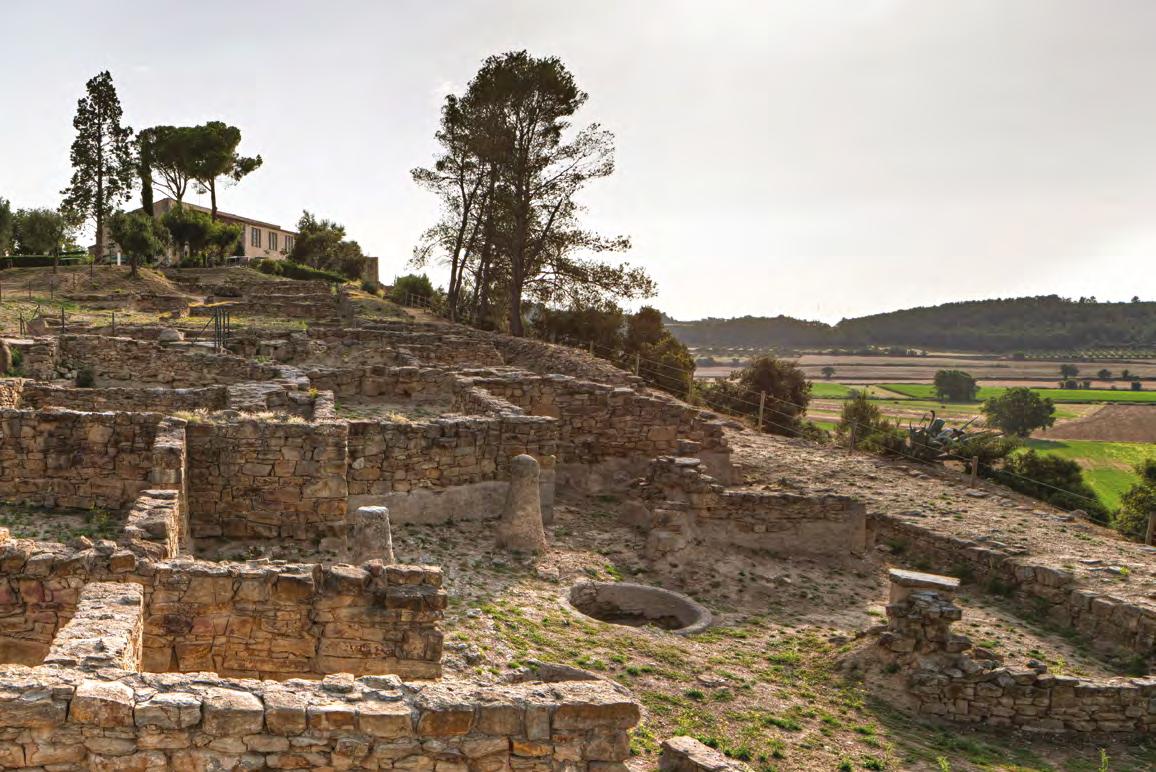
Tracing the history of the first inhabitants of this area is easy and offers the possibility of discovering wonderful beauty spots, such as the Albera Massif. This magnificent natural setting contains some fascinating prehistoric remains: megalithic monuments. Some five thousand years ago, the first settlers in these lands began the custom of burying their dead in dolmens and erecting innumerable menhirs. Several routes have been created within the Albera Natural Site to help visitors discover what human beings were capable of achieving five thousand years ago. These huge stones can also be seen very close by, in Darnius and Agullana, since the two towns are starting points of the Salines-Bassegoda megalithic route. This area is one of the best-kept secrets in the province of Girona. Halfway between Alt Empordà and Alta Garrotxa, with one foot in the Mediterranean and the other in the Pyrenees, visitors will discover wonderful landscapes. Megalithic culture is scattered right along the Costa Brava. For instance, in Baix Empordà, the so-called Cova d’en Daina (Daina Cave) is preserved. In reality,
it is a dolmen built between 2700 and 2200 BC. And one of the area’s most popular vestiges of prehistoric times is found in Romanyà de la Selva (municipal district of Santa Cristina d’Aro).
Venturing into the inland counties gives visitors the chance to discover one of the most important settlements in Europe: the Serinyà Prehistoric Cave Park. What makes them unique is that they were inhabited both by Neanderthals (90,000-39,000 BP) and by modern humans (39,000-16,000 BP).
The only neolithic lake settlement on the Iberian Peninsula is located in Banyoles (next to Serinyà). Today the lake is a popular spot for leisure and sports but 7,000 years ago it was the ideal environment for living, hunting and fishing. The site’s attractions include the typical Neolithic cabins that have been reconstructed there, making it an ideal place for igniting a passion for ancient history among younger visitors, who are always looking for adventures and new experiences.
It was on the Empordà plain where the Iberians built the most important urban complex that has been located in Catalonia to date: Ullastret.
The Iberians were groups of indigenous peoples that inhabited the Iberian Peninsula before the arrival of the Greeks. The earliest vestiges that have been found related to their culture date back to the 6th century BC, while the latest correspond to the period of Romanisation (around the 2nd century BC).
To visit Ullastret is to enter an oasis of calm, where a harmonious balance is struck between the typical Baix Empordà landscape and the complex of houses and streets trodden by the Iberians 2,500 years ago.
The history of these Mediterranean lands is long and rich and there are vestiges from every period scattered throughout the area. One example is Lloret de Mar, where archaeologists have unearthed the fortified enclosure of Puig Castellet, the Turó Rodó Iberian settlement and the Montbarbat complex, which is the largest of the three settlements and where there is still much to be discovered. This is a highly recommended visit for discovering the rich heritage of this town in the coastal part of La Selva region.
If there is one place that has to be on the list of must-see visits for archaeology enthusiasts and lovers of classical culture, that place is Empúries. It is such a rich and extensive site that excavation works have been going on there since 1908 with no end in sight.
Iberians, Greeks and Romans lived in Empúries and during Antiquity it was one of the main trading centres of this part of the western Mediterranean. Furthermore, it is the only site on the Iberian Peninsula that contains remains of both a Greek city and a Roman city. The Greek city began as a trading colony called Empòrion, while the Roman city was initially a military camp set up during the Second Punic War.
The Empúries site also houses an excellent interpretation centre that helps visitors to understand its importance as a key element for the development of what would end up being Catalonia.
Apart from its archaeological importance, Empúries is located in an incomparable setting right next to the sea and offers visitors the chance to enjoy the most charming beaches in this part of the Costa Brava, taking a dip and soaking up the sun next to the quay where Greek ships used to dock 25 centuries ago.
Iberians, Greeks and Romans lived in Empúries and during Antiquity it was one of the main trading centres of this part of the western Mediterranean. Furthermore, it is the only site on the Iberian Peninsula that contains remains of both a Greek city and a Roman city.

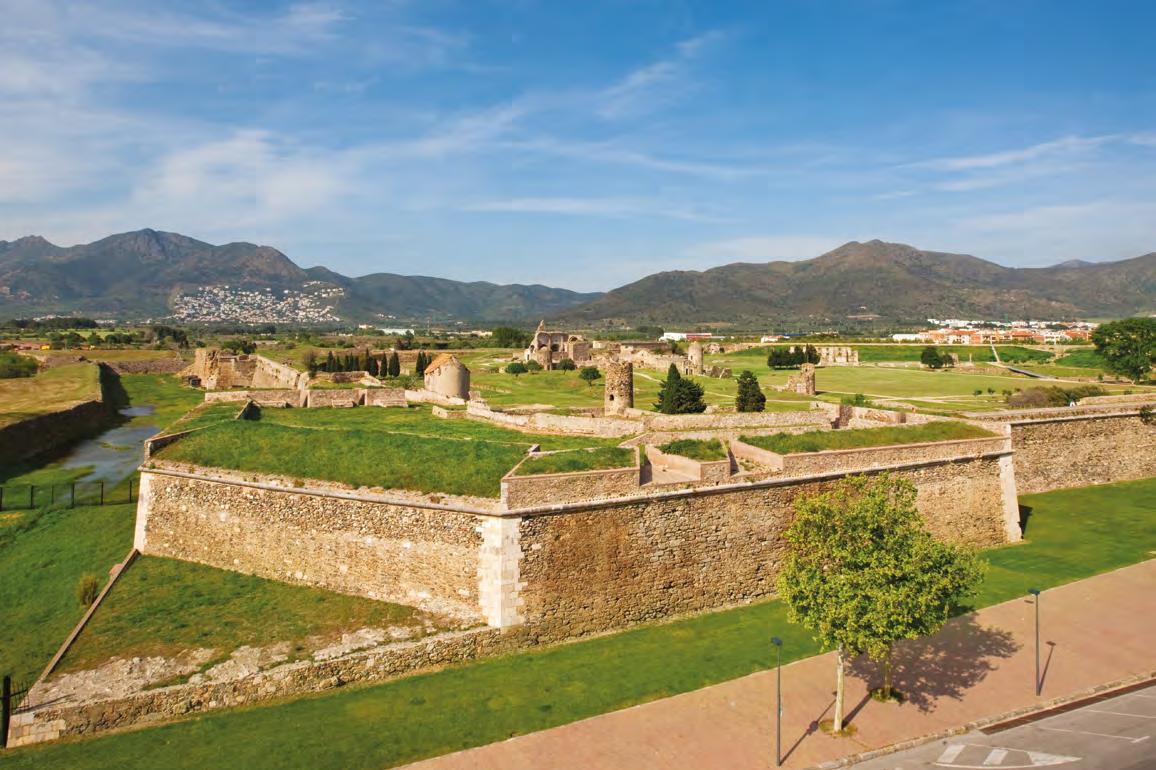
Empúries was the gateway used by the Romans to enter the Iberian Peninsula. As explained above, the reason was military. Rome and Carthage were at war and these lands formed the battlefield between the troops of Hannibal and Scipio in the Punic War. These events, which occurred in 218 BC, symbolically mark the start of Romanisation, a key period for understanding the area.
To see the mark left by the Romans in the area up close, it is strongly recommended to visit Roses, Tossa de Mar and Caldes de Malavella.
A key site in Roses is the Citadel, a fortification brimming with history that contains preserved Roman defence constructions, along with remains from the mediaeval and Renaissance periods.
Those curious to discover what rural Roman life was like must visit the Roman villa of Els Ametllers in Tossa de Mar. A typical structure of the time has been documented, split into two areas: one for the production of oil and the other designated as living space.
The Romans knew how to enjoy what nature had to offer: oil, wine... and thermal waters, such as those in Caldes de Malavella. Today’s spas were thermal baths two thousand years ago that were very popular with the local people.
It is often said that the Greeks and Romans built the foundations of modern Europe. This is clear to see even in everyday elements such as road infrastructures. The roads that exist today practically follow the same route as the old Roman roads. Those who want to see this for themselves only need to travel to Garrotxa, where they can visit the Roman road of Capsacosta and the Vic-Olot Camí Ral (Royal Way).
Observing the solid construction of these roads, it is easy to understand how the Roman emperors managed to control their vast possessions so efficiently. As such, it is not surprising that the legacy left by the Romans was so important that much of what they built continued to be used in subsequent periods of history.
As such, it is not surprising that the legacy left by the Romans was so important that much of what they built continued to be used in subsequent periods of history.
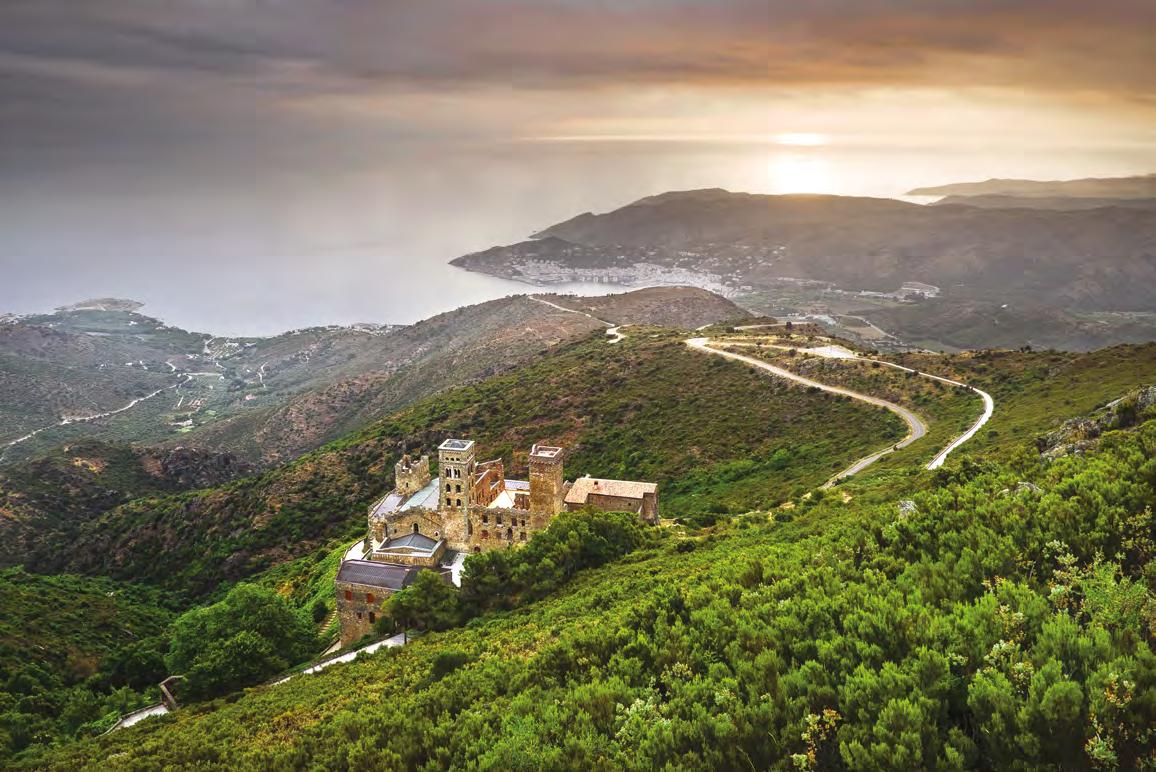
and sacred places that will transport you to the Middle Ages
architecture
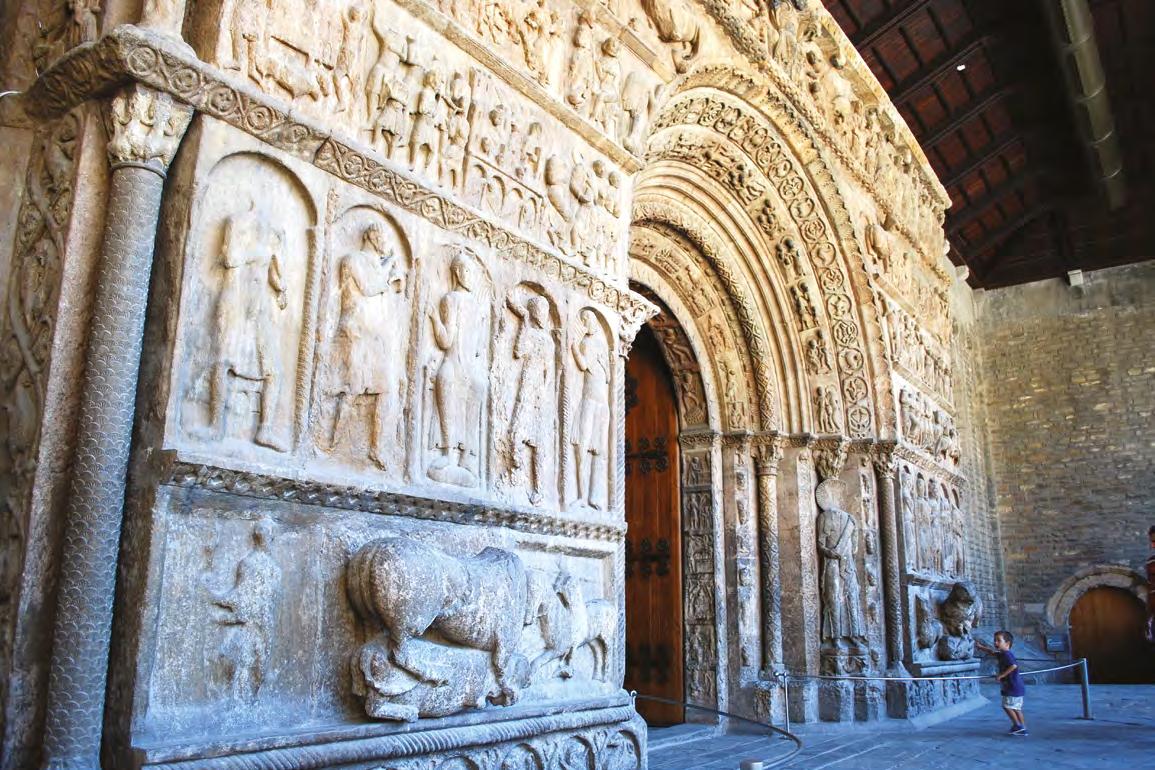

Over a thousand years ago, noblemen, peasant farmers and monks were all so utterly convinced of God’s existence that they dedicated the most magnificent buildings to Him: churches, convents and monasteries scattered throughout the area. Their precise architecture (with half-point arches and barrel vaults) continues to marvel those who gaze at it.
If their stones could talk they would tell so many stories about the people of that period... What secrets would be revealed by those of Sant Pere de Rodes? This Benedictine monastery is situated in an incomparable setting, where the Pyrenees and the Mediterranean merge to form a wonderful landscape. The monastery, a testament to and host of so much beauty, welcomes visitors with the serenity that comes with such vast experience, offering an outstanding view of the Cap de Creus headland as a welcome gift. The Romanesque origins of the monastery are clear to see in its main
monumental section, featuring the harmonious bell tower that crowns the church and the cloister.
The monastery of Sant Quirze de Colera, located at the gateway to the Albera massif, is another wonderful example of this kind of architecture, and a visit there is a good excuse to discover the more inland part of Alt Empordà.
The same county also contains another architectural gem: Santa Maria de Vilabertran, the residence of a community of Augustinian canons. Its beauty explains why King James II of Aragon and Blanche of Anjou chose it as the ven ue for their wedding in 1295.
Preserved in the county town of Peralada is the Romanesque cloister of the ancient convent. A leisurely visit is highly recommended to admire the beauty and originality of its capitals. The museum of Peralada Castle contains an extraordinary library which houses the book collection of the last counts.
Over a thousand years ago, noblemen, peasant farmers and monks were all so utterly convinced of God’s existence that they dedicated the most magnificent buildings to Him: churches, convents and monasteries scattered throughout the area.
Heading towards the Pyrenees, we come to Ripoll, where it can be stated that some stones do indeed talk. Few portals say as many things as that of the monastery of Santa Maria, an exquisite sculptural work that depicts several biblical scenes. The monastery is one of the most beautiful examples of Romanesque architecture and, thanks to the books produced in its scriptorium, which can be visited today, it became one of Europe’s most important cultural centres. It is considered a key symbol for Catalan identity since it is the final resting place of the nobleman Wilfred the Hairy, one of the forefathers of Catalonia. Wilfred was the founder of the Benedictine convent of Sant Joan, after which the town of Sant Joan de les Abadesses was subsequently named. The convent contains the sculptural complex entitled El Santíssim Misteri (The Most Holy Mystery), a unique example of the transition from Romanesque to Gothic architecture.
There are also places of great interest in Camprodon, such as the Romanesque bridge Pont Nou, the town’s
emblem, or the monastery of Sant Pere. The Way of Saint James passes through Puigcerdà, capital of the county of Cerdanya, before heading towards La Seu d’Urgell, taking in a good number of churches and sanctuaries on the way.
Back on the Romanesque trail, the church of Sant Cristòfol in Beget is a must-see attraction, keeping watch over the town with its slender 22-metre high bell tower. The villages of Oix, Montagut, Sadernes, Tortellà or Beuda, all with their own special charm, are equally worthy of a visit.
Whether in the mountains or on the coast, the eternity searched for by the people of this land over a thousand years ago can still be perceived today on admiring their architectural creations.
Some towns are like time machines, allowing visitors to travel back in time. This is certainly true of Besalú, a wonderful historical-artistic complex with so many points of interest for visitors. The most popular is the imposing bridge over the Fluvià river, which leads into the ancient county town. The most
noteworthy buildings include the monastery of Sant Pere, founded in 977, and the church of Sant Vicenç, founded in the same year, which despite dating from the Romanesque period features some elements indicative of the transition to the Gothic style.
At that time the town was very popular with travellers and the church-hospital of Sant Julià was founded to provide them with shelter and rest. The institution was run by the monks of the abbey of Sant Pere.
Religious and civilian buildings intermingle, a fine example of the latter being Casa Cornellà, one of the best preserved noble residences of the Romanesque period. As will be explained, a significant Jewish community lived in the town, leaving behind a unique legacy.
Girona possesses architectural treasures from every period. The majesty of the city’s cathedral means that it is the first to capture the attention. However, it demands careful observation. Although the imposing bell tower and majestic steps stand out
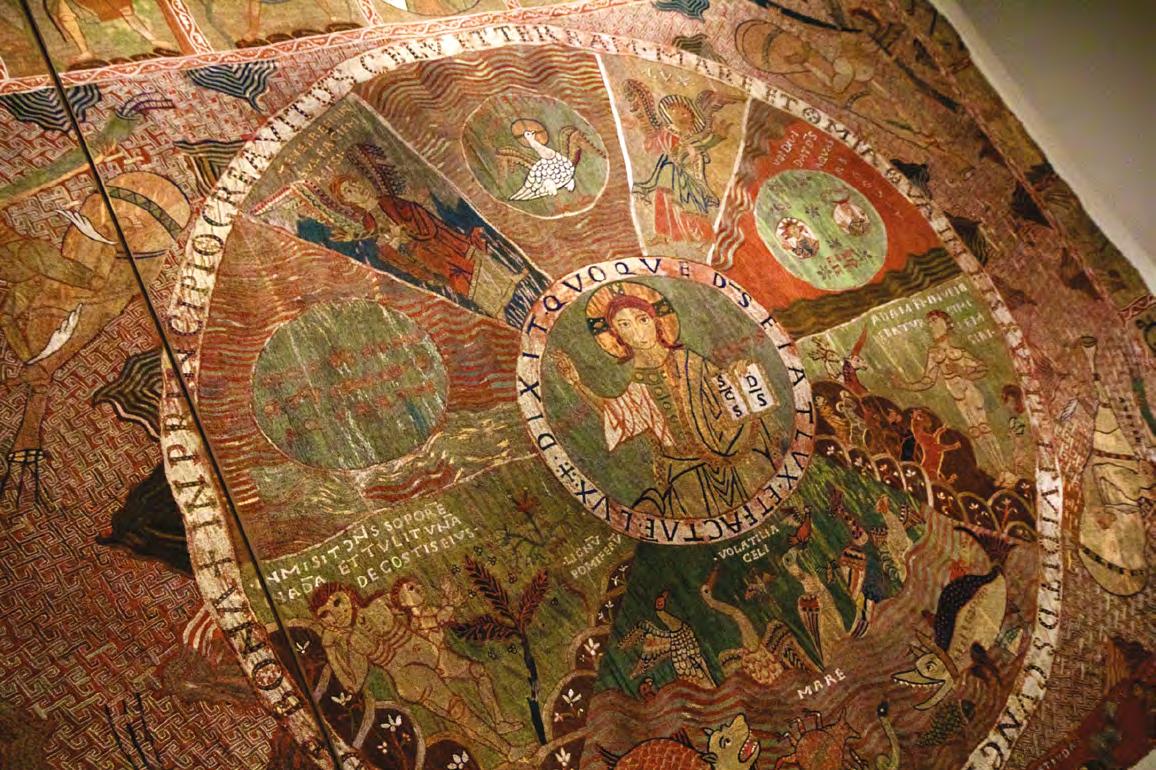

immediately, another notable feature is the so-called Charlemagne Tower, the ancient Romanesque bell tower that serves as a buttress to support the Gothic nave of the present-day cathedral. The Tapestry of Creation, a needlework panel produced circa 1100, is on display in the Cathedral’s Treasury. This delicate work is extremely rich in iconographic details that aim to explain the origin of the world and continue to fascinate scholars from all over the world.
Several monuments preserve intact their Romanesque essence, such as Sant Pere de Galligants, an ancient Benedictine abbey that today is home to the city’s archaeology museum. Next to it is the chapel of Sant Nicolau, now a municipal exhibition hall. Together, the two buildings form a wonderful architectural complex.
Very close by is a highly distinctive Romanesque building with a deceptive name: the Arab Baths. Despite imitating the structure of Muslim baths, it was built and used by the Christians of the time. These are just a few of the marvels that can be found in the Barri Vell (Old Quarter), which is overlooked
by the cathedral and its inseparable companion, the Gothic church of Sant Feliu. They form the tip of a deep iceberg that goes back to the time of the Roman Empire, when Girona was Gerunda and was protected by walls of which fragments can still be seen today in the Sobreportes gateway and in Plaça de Sant Domènec. These huge ashlars are testament to 2000 years of history and have been silent observer of Girona’s citizens making their way down Carrer de la Força to begin a stroll along La Rambla (now the city’s commercial artery) or building bridges to cross the irascible Onyar river, capable of flooding everything. Only the sturdiest crossings have survived its rages, such as the Romanesque bridge Pont de Pedra, or Pont de les Peixateries Velles, a bridge designed and built by Gustave Eiffel before his name became forever associated with a certain tower in Paris. In Girona, a short stroll is enough to take you from the intimate, almost secret streets of the Old Quarter to the modernity of the present.
The sword and crucifix have marked the course of history, a fact attested to by the architectural legacy of the area, filled with both castles and places of worship. Some of the most important of the latter formed part of the Way of Saint James. During the journey, pilgrims would pass through the county of Cerdanya, where they stopped to rest in places such as Bolvir, Bellver, Martinet or Llívia, famous for its old quarter and for the Esteve pharmacy, one of the oldest in Europe.
The Pyrenees contain places of worship that are well worth a visit, such as the monastery of Núria, located right in the middle of a stunning valley that offers all the necessary comforts for family and mountain tourism. Located close by is the sanctuary of Montgrony, whose guest house is an excellent choice for hiking enthusiasts and for those seeking some peace and quiet.
In this part of the world, places of worship and castles are waiting around every corner to be discovered by the most intrepid visitors.

In the past they witnessed battles and were residences of the nobility Castles and fortresses
The 13th and 14th centuries were Catalonia’s golden age and saw the proliferation of a new form of architecture, the Gothic style. As explained above, the city of Girona possesses extraordinary examples of this architecture but it can also be found in other places, such as Castelló d’Empúries. This town was one of the most important of the time since it was the capital of the county of Empúries. A tour of the Counts’ Palace and of the basilica of Santa Maria, popularly known as the Cathedral of Empordà, will give visitors an idea of its grandeur. Other noteworthy landmarks include the curia building, the old bridge and the 14th century prison.
The architectural legacy of the Middle Ages in the counties of Girona can be easily seen in the form of castles and city walls. In some cases they provide an inimitable outline, such as in the case of the Vila Vella (Old Town) of Tossa de Mar, the only fortified coastal town in Catalonia, or in Torroella de Montgrí, where the castle stands alone at the top of the Montgrí massif with its four towers and perimeter walls, offering spectacular views of the county and of the Medes Islands.
Over the centuries these constructions have become extraordinary watchtowers that allow visitors to discover fascinating landscapes. This is certainly true of Requesens Castle, which overlooks the Albera massif, and of Montsoriu Castle, located high up between Arbúcies and Sant Feliu de Buixalleu, offering an incomparable panoramic vista of the Montseny Natural Park. Furthermore, very close by is the town of Hostalric, where one of the most important monumental legacies of the Middle Ages in Catalonia is preserved virtually intact, along with an important military fortress dating back to the 18th century.
Gombrèn, in the county of Ripollès, is home to Mataplana Castle, which was used as a residence rather than a functional fortification. Legend has it that this castle was the dwelling place of Count Arnau.
Bufalaranya Castle stands in a wild spot close to the town of Roses. This ancient historical monument dates back to the 8th century, when the territory of Roses formed part of the Carolingian March.
Another important place is La Bisbal d’Empordà, which contains the old episcopal palace of the bishops of Girona, the feudal lords of the city. The building is an exceptional example of civilian Gothic architecture.
Over the centuries the nature of warfare changed and great fortresses were built. The biggest and most spectacular in Europe, with nine large buildings, is the 18th century Sant Ferran Castle in Figueres, containing everything from Gothic stables to drinking water cisterns, which can be visited today.
The 13th and 14th centuries were Catalonia’s golden age and saw the proliferation of a new form of architecture, the Gothic style.
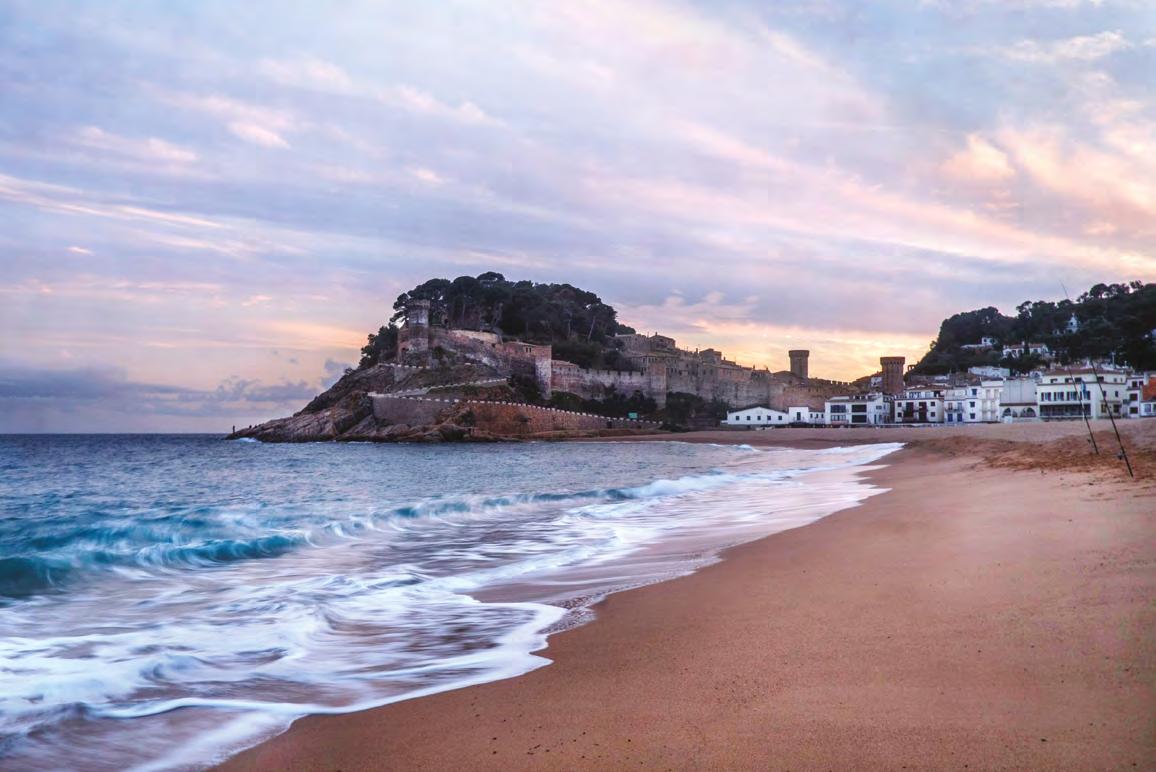


The counties of Girona breathe history and beauty from north to south and from east to west. Travelling around them, whether inland or along the coast, will be enough to convince any non-believers. For those who like the sea there are so many towns on the way to the Mediterranean that preserve the perfume of the past. For example, close to La Bisbal d’Empordà we have Monells, whose mediaeval appearance has been preserved in the form of its wonderful arcaded square.
Right by is Cruïlles, where for over a thousand years a great keep has stood that formed part of a castle that has long disappeared. Also noteworthy are the chapels of Sant Joan de Salelles and Mare de Déu de l’Esperança, and above all the monastery of Sant Miquel.
The route may continue on to Corça, which shares the mediaeval spirit of the neighbouring towns. A stroll around Corça is highly recommended before moving on to Peratallada, a town full of uneven streets protected by a wall. The epicentre of the complex is the Town Square, a delicate space around which everyday life revolved centuries ago.
Heading towards the sea, the route may take in Palausator. Founded in Roman times, it was walled during the Middle Ages and protected by a castle of which many fragments remain.
It is also worth stopping off in Pals, one of the most charming towns in Baix Empordà, famous for its rice and boasting an interesting cultural heritage concentrated in the Pedró district, situated on a hill that overlooks the surrounding area. Visitors will find a rich and varied architectural legacy that spans from Roman times to the 18th century.
As you stroll around Pals you must not miss the Gothicstyle church of Sant Pere and the keep (Torre de les Hores), the most famous landmark in the Pedró district and the last remaining element of the old castle.
During the Middle Ages, the Pyrenees area was very active and dynamic. At that time the mountains did not form an administrative border but rather served as the spinal column of Catalonia when it stretched as far as Roussillon. The vibrancy of the period can be easily perceived on visiting some of the towns that still
preserve their mediaeval spirit. In addition to Besalú, mentioned above, another place well worth visiting is Beuda, where a handful of Romanesque churches have been preserved, along with the monastery of Sant Sepulcre de Palera.
In Garrotxa we come to Santa Pau, a place brimming with history. This town, located in the Natural Park of the Garrotxa Volcanic Zone, contains archaeological remains that date all the way back to the Neolithic period. A climb up to the sanctuaries of Santa Maria dels Arcs and Santa Maria de la Cot affords a view of the ancient volcanoes that shape a unique landscape. Important landmarks in the town of Santa Pau include the square (arcaded and presided over by the parish church), known as the Cattle Market because it was the place used to hold fairs and markets.
So, whether you seek the shelter of the Pyrenees or head towards the sea, the counties of Girona are full of towns and villages that have managed to make time stand still.

Explore the heritage of Jewish communities as you stroll around their Jewish quarters
The Jewish legacy
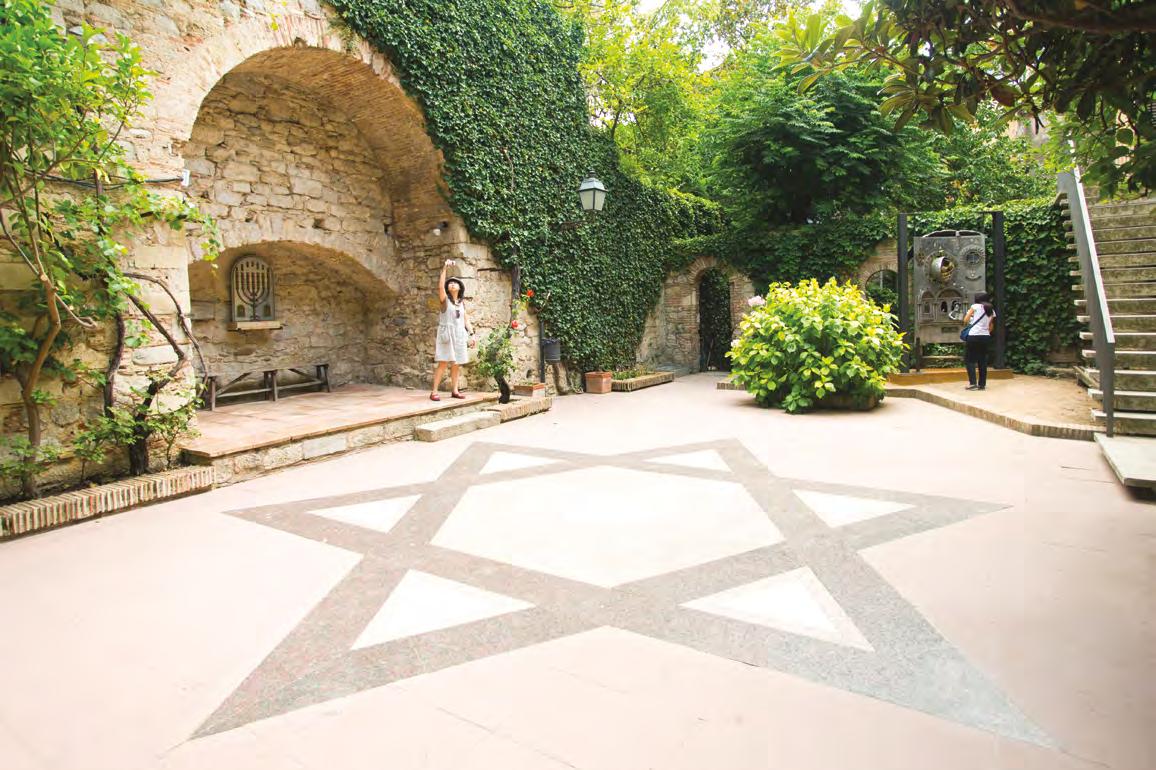
Although the year 1492 is usually associated with the discovery of America, it also marked the expulsion of the Jews from the kingdoms of Castile and Aragon. Families who had lived in the Iberian Peninsula for centuries were forced to leave simply because they were of a different religion and culture from Christianity. The passage of time thereafter obscured their legacy and it was not until five centuries later that it began to be recovered.
Visitors can catch a glimpse into this legacy at the Girona Museum of Jewish History, which offers a journey through different aspects of the daily life, culture and history of the Jewish communities in Catalonia and in Girona in medieval times. The museum is located on the site of the synagogue in the fifteenth century and the areas occupied by the city’s Jewish community. Archaeological excavations from 2011 to 2014 revealed both the remains of the fifteenth-century mikveh, and also of a house built in the thirteenth century and documented until 1492 as part of the synagogue complex. These remains help to explain and provide a better understanding
of the Jewish quarter’s development. The third floor is home to the Nahmanides Institute for Jewish Studies for research into and recovery of Jewish heritage. This cultural complex goes by the name of Bonastruc ça Porta Centre in tribute to the most important Girona rabbi, who was a talmudist, man of letters and cabalist of universal renown. Many of the steep streets of Girona’s old town still conserve the appearance of the times when the Jewish quarter was at its height and the Jewish townspeople lived and worked there.
The ancient county town of Besalú is another emblem of Jewish culture. It still features some elements unique in the Iberian Peninsula such as the mikveh, which was the sacred area where the ritual of spiritual purification by total immersion was performed according to Jewish religious bathing rites. Just above this site, after years of research the location of the synagogue was confirmed in 2005. From here one can pass through the Jews’ Gateway, which links the Jewish quarter to the riverside walk.
More is known about the end of the Jewish community in the Girona region than its arrival. Some indications suggest that the first Jews may have arrived with the Phoenicians, around the sixth century BC. The first archaeological evidence of their presence, however, dates from Roman times and was found specifically at Empúries: a clay seal from the second century BC.
At Castelló d’Empúries Jewish presence is apparent in the town’s layout and one of the streets in the Jewish quarter, on the site of the town’s first synagogue, is still known as Carrer dels Jueus.

the Indianos
When the onset of the 20th century and colonial influences became art Modernism and the Indianos
As the 19th century drew to a close, Catalonia experienced one of the most exciting periods in its history. A new approach permeated all aspects of culture: music, literature, painting and architecture. Everybody wanted to be a part of modernity, to embrace 1900 and leave the old century behind. Modernism had arrived, a beautiful and voluptuous style that burned brightly in the early decades of the 20th century.
“One of the driving forces of modernism and noucentisme in Girona was the architect and poet Rafael Masó, who constructed several buildings in the city, including his own home, which is now open to the public and houses a foundation that preserves and disseminates his work. An exploration of the rooms of Casa Masó brings home the extent to which modernism imbued everything: the design of the furniture, the pattern of the fabrics,
the window panes... The house, set in the heart of the Old Quarter, marks the start of the Masó trail, along which visitors can discover his legacy in Girona.
Caldes de Malavella lies just a few kilometres away from the city. The town is famous for the thermal properties of its water, exploited since Roman times. Most of the spas found in the town today were designed in accordance with the stylistic parameters of modernism, two excellent examples being the Prats and Vichy Catalan spas.
Figueres is another great modernist city. Although it mainly owes its popularity today to Salvador
Dalí, the fact is that the capital of Alt Empordà was already an extremely important artistic and cultural centre long before his time. At the turn of the 20th century, the richest families showed off their
wealth by building houses and setting up cultural initiatives, such as the Sala Edison, the first cinema in the Girona area, or the El Jardí theatre.
It was a time of extraordinary cultural flowering and these wonderful buildings, with their sinuous shapes and bright colours, continue to evoke it.
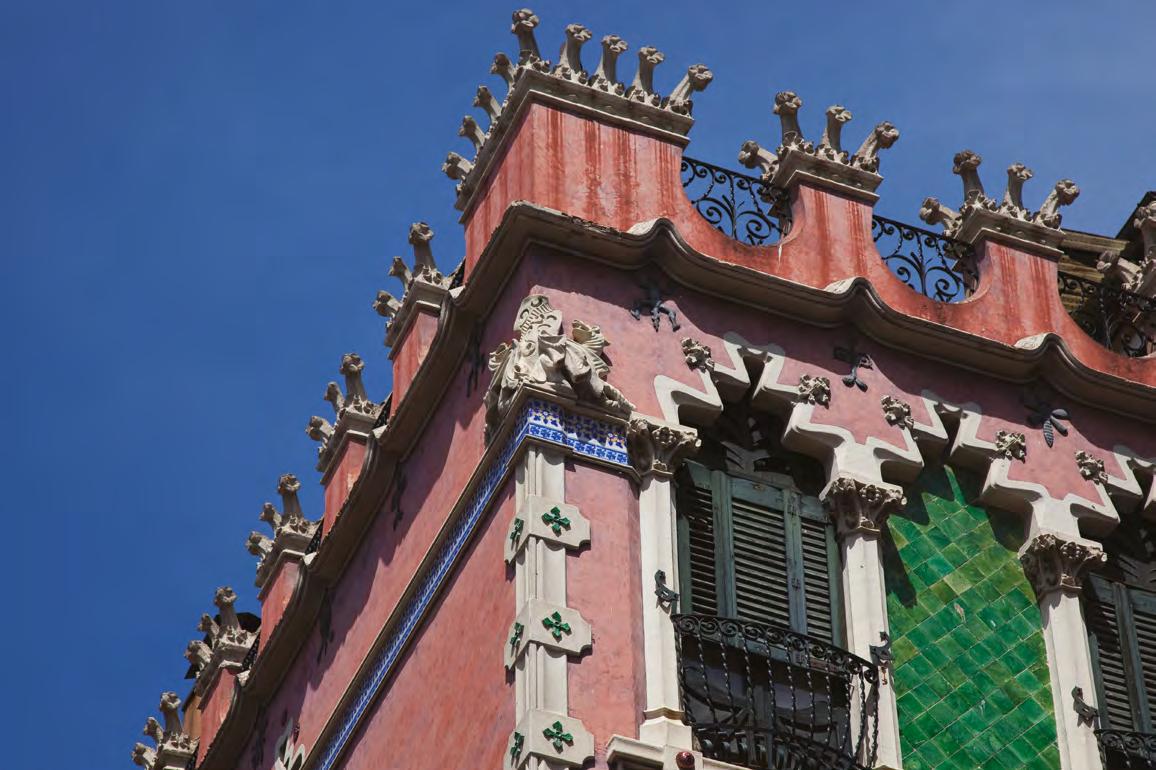

There are plenty examples of Art Nouveau in Blanes, which boasts a series of buildings with Art Nouveau influences, as well as the Marimurtra Botanical Gardens where botany and architecture merge beside the sea.
At Lloret de Mar, different architects from the period constructed buildings of interest such as Can Font, and helped to decorate the Mare de Déu de Gràcia sanctuary and restore the church of Sant Romà in Art Nouveau style. In the cemetery there are also family mausoleums in the same style. Lloret de Mar also has the noucentista gardens of Santa Clotilde, where there is sculpture in every corner.
Sant Feliu de Guíxols boasts some of the most extensive modernist heritage found anywhere in the Girona area. In addition to private houses, such as Casa Estrada at Sant Pol beach (also known as Torre de les Punxes or Villa of Spikes), the town cemetery is also well worth a visit.
Olot is another city with significant modernist landmarks. The city is an essential place to visit in order to grasp the prolific artistic activity that has taken place in this area over the last two hundred
years. It therefore comes as no surprise that the architecture of the early of the 20th century has left its mark on the city. Without a doubt, the jewel in the crown of modernism in Olot is Casa SolàMorales, designed by the prestigious architect Lluís Domènech i Montaner.
Two towns in the Pyrenean area, Ripoll and Camprodon, lie very close by. It was typical for the private doctors of Barcelona’s bourgeoisie to recommend stays in the area to assist the convalescence of patients. The urge to get away from the hustle and bustle of the city and breathe the pure air of this area led to the construction of hotels and holiday homes. Even today, these buildings are a symbol of the economic power of those who enjoyed them, since despite being located far from the great city they still wished to belong to the social and cultural phenomenon of the period.
One of the main attractions in Camprodon is the house in which the world-famous composer Isaac Albéniz was born. His works became hugely popular all over the world and today help to conjure up that period of splendour for Catalan art.
It was a time of extraordinary cultural flowering and these wonderful buildings, with their sinuous shapes and bright colours, continue to evoke it.
A new approach permeated all aspects of culture: music, literature, painting and architecture. Everybody wanted to be a part of modernity, to embrace 1900 and leave the old century behind.
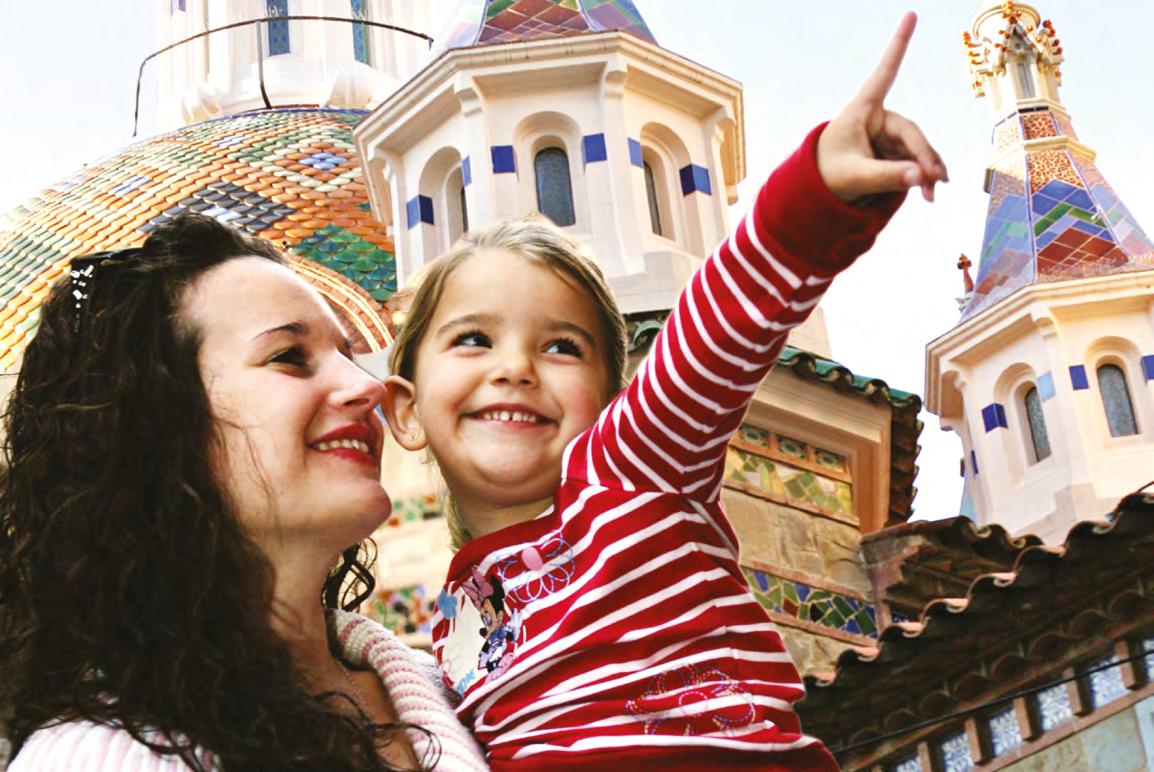
For many years it was easier for the inhabitants of coastal towns to board a ship and set sail for America than to reach inland Catalonia. No roads or carts were necessary to ply the seas. So it is not surprising that when it came to seeking their fortune they headed to America. The most popular destination was Cuba, which was a Spanish colony until 1898.
It seemed that on the other side of the Atlantic anyone could make a fortune, at least judging by those who returned home a few years later. The newly wealthy were known as Indianos or Americanos. Perhaps nostalgic for the Antilles, some of them built enormous Cuban-style mansions back in their home towns. These towns now form part of the Network of Indiano Towns, an initiative aimed at showcasing this heritage. The main office of the network is located in Begur, where a trail has been designed to enable visitors to discover ten Indiano buildings. Those who opt for the guided tour will have the chance to visit the house of Pere Roger. Cadaqués is another prominent town with interesting Americano landmarks. Some of these
residences, such as Casa Serinyana, were built during the modernist period.
Moving further down the coast we come to Palafrugell, the birthplace of the great writer Josep Pla. The house in which he was born forms part of the trail, which also takes in Can Bassa Rocas, Can Ferriol and wonderful beauty spots such as Port Bo beach and the sanctuary of Sant Sebastià. Calonge also witnessed the success of fortune seekers. The trail starts at the parish church of Sant Martí, whose restoration was funded by natives of Calonge who lived in Havana. The trail then takes in twelve places where the legacy of those who made their fortune in America is still preserved.
One of the towns where the Indianos have left an indelible mark is Sant Feliu de Guíxols. Thousands of people left the town to try their luck in the colonies. Despite the distance separating them, they did not lose touch with their fellow townsfolk and provided economic support for all kinds of building projects: the seafront promenade, the Casino dels Nois building or the public fountain in the market
square. Their legacy is also clear to see in the private mansions that they built, one outstanding example of which is Casa Patxot, which now houses the chamber of commerce.
In this respect, Sant Feliu is similar to Lloret de Mar, where the Americanos also funded the works of the seafront promenade (Passeig de Jacint Verdaguer), the church of Sant Romà and the monastery of Sant Pere del Bosc, later renovated and turned into a luxury residence by the modernist architect Josep Puig i Cadafalch.
Even in death the Indianos wanted the memory of their greatness to live on, as can be appreciated in a visit to the beautiful cemetery of Lloret, which contains extraordinary examples of funerary art.
Houses, churches, squares... the Costa Brava is full of places which show that, with enough hard work and effort, dreams really can come true.

There is no document of culture that is not at the same time a document of barbarism»
Walter Benjamin Scenes of memory
The world is still deeply affected by the memory of the Second World War and its prelude, the Spanish Civil War. These two terrible conflicts left deep scars on the area and its people.
This is why the work of the Exile Memorial Museum (MUME) is so crucial. The museum is located very close to the French border in La Jonquera, a town through which thousands of people passed in 1939 as they fled from the Spanish Civil War and from the repression of Franco’s dictatorship.
It was not until 1975 that democracy was restored, along with the freedoms in defence of which so many had lost their lives. The MUME forms part of the Network of Historical Memory Sites of Catalonia and has implemented various projects to raise awareness of the tragedy of 1939, such as placing signs at the key points of the paths to exile.
By tracing the geography of the retreat it is possible to see how much upheaval was caused by the war. Air-raid shelters to protect the civilian population in
Girona, Roses, L’Escala or Palamós. Defence bunkers built during Franco’s regime close to the coastline in Llança. Farmhouses turned into government headquarters, such as Can Barris in La Vajol, where the office of the President of the Spanish Republic was located, or Mas Perxés in Agullana, where the Government of Catalonia set up its headquarters, before its members crossed the border into France.
Or a series of routes described in the novel Soldiers of Salamis, recreating the final days of the Spanish Civil War.
As if the Spanish Civil War had been a prelude, the Second World War broke out in 1939. The Axis powers, led by Nazi Germany, aimed to rule the world. In addition to the persecution suffered by the Jews, other collectives also fell victim to Nazism on grounds of ethnicity, political ideology, religion or sexual orientation. It was soon the turn of the Europeans to flee, following the paths travelled just a few months earlier by the Spanish republicans.
The Pyrenean border became one of the routes for escaping the barbarism. Reaching Portugal and then heading to America was the wish of many, including the German-Jewish philosopher Walter Benjamin in 1940. However, on reaching Portbou he was arrested by the Francoist authorities, along with the rest of the people in the group with whom he was fleeing. The next day Benjamin died in strange circumstances, with some hypotheses claiming that he committed suicide and others that he was murdered. Whatever really happened, his death was hushed up by Franco’s regime and it was not until 1979 that the process of paying tribute to his memory began.
Today, Portbou houses the Walter Benjamin Memorial Site and the “Passages” memorial, created by the Israeli sculptor Dani Karavan as a tribute to the philosopher. This creation is the embodiment of what historical memory means in the Girona area: the beauty of the landscape coexists with a series of events that should be remembered, never to be repeated.
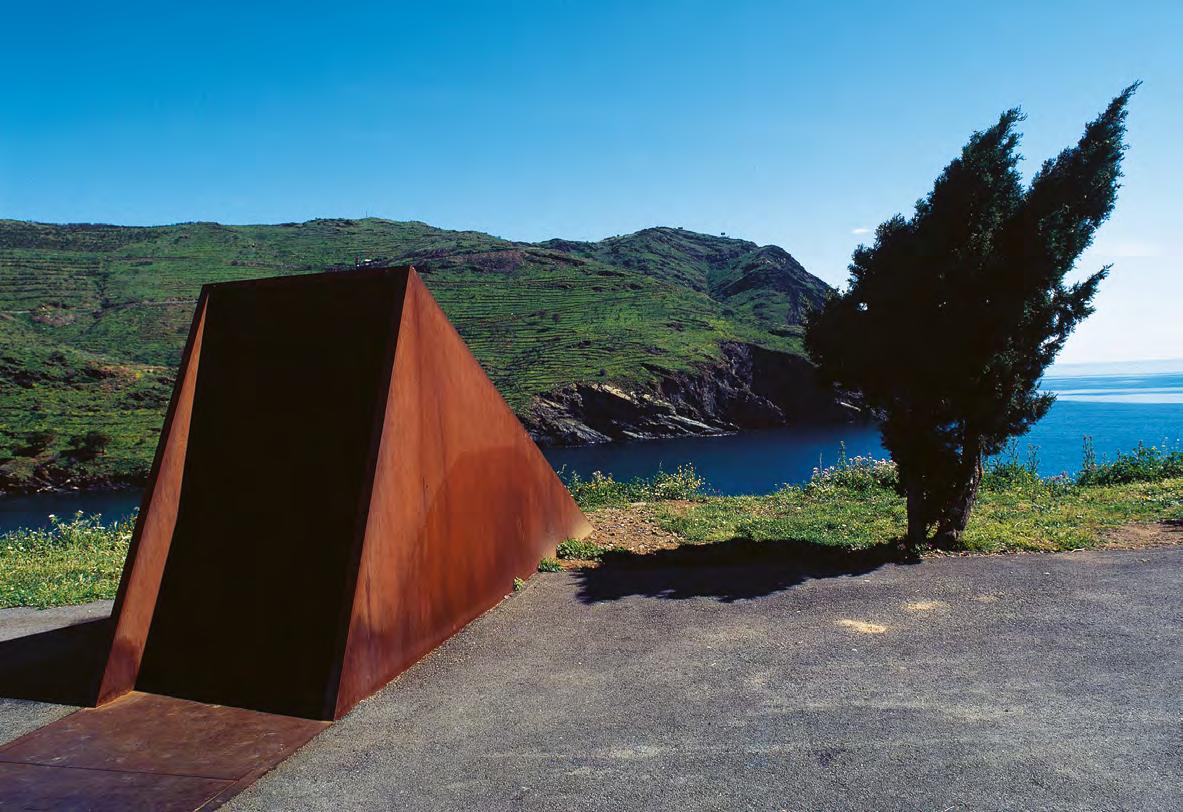
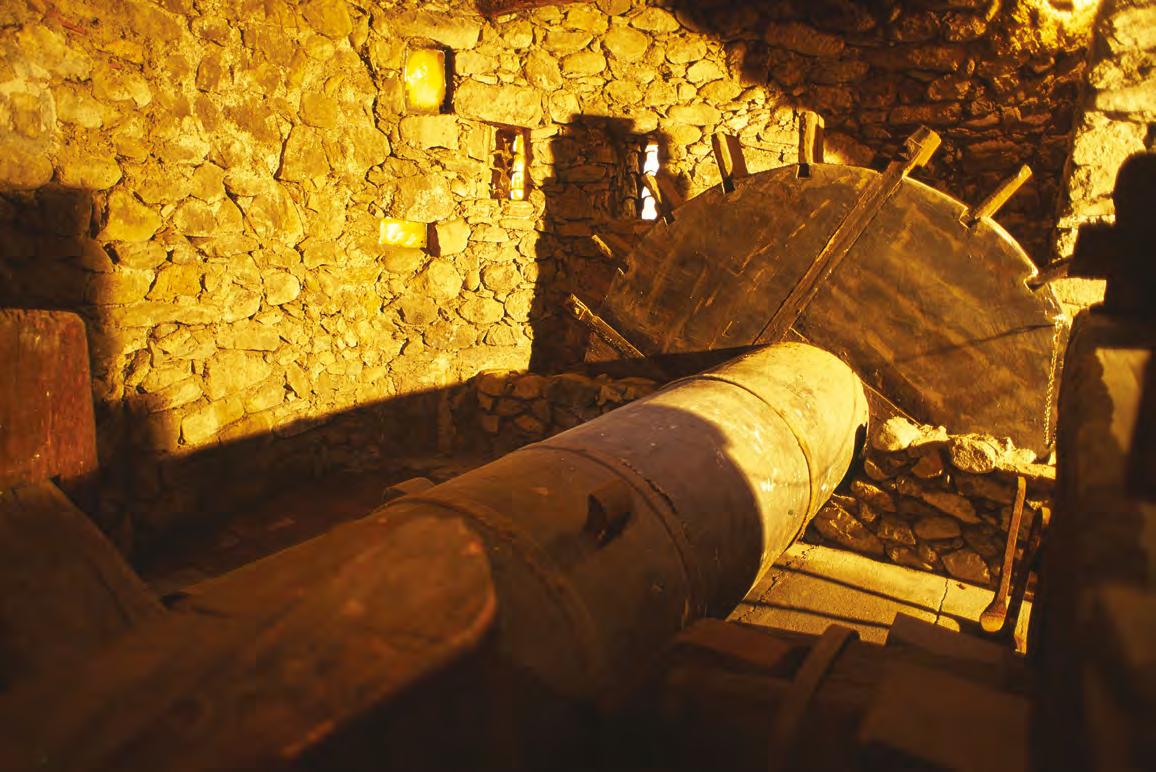
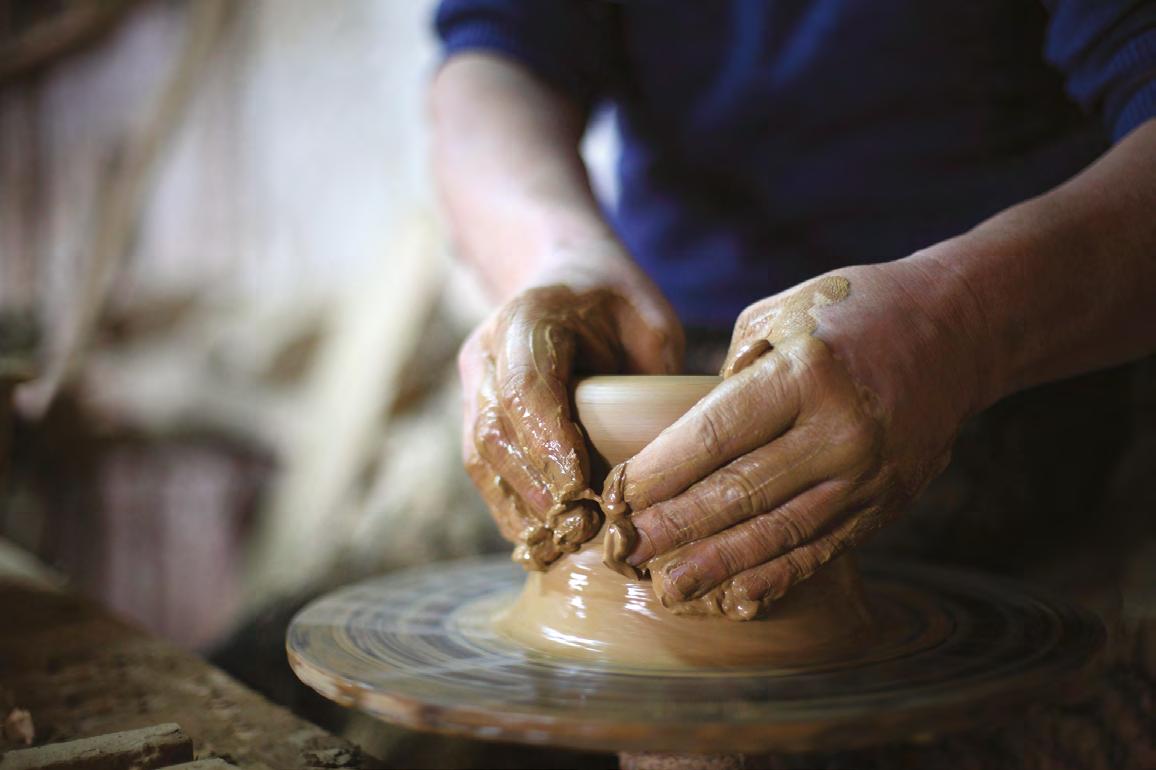
This is a land made up of small details and intimate landscapes. Perhaps that is why its people are not given to grandiloquence; quietly going about their lives forms part of their character. They are accustomed to working hard to make a living, a fact that becomes patently clear on a trip around the Girona Pyrenees and the Costa Brava to discover the typical traditional trades of the area.
One could begin, for instance, by visiting towns famed for their ceramics, in particular La Bisbal d’Empordà, Quart and Breda, which owe their popularity to the quality of their products and to the ability of each town to preserve its special character. Ceramics have formed part of the everyday life of Mediterranean cultures for thousands of years.
The same can be said of wickerwork, the art of creating essential items for farming and fishing out of wicker. Some of the finest wickerwork establishments in the area are to be found in Palafrugell.
Meanwhile, inland towns such as Sant Hilari Sacalm specialise in woodwork, traditionally producing kitchen utensils that are still highly appreciated by cooking enthusiasts. When it comes to craftsmanship, the city of Olot deserves special mention for a peculiar yet fascinating establishment: the Museum of Saints. This workshop of religious
images and statues still operates today and offers visitors the chance to see the production process of these figures used for the decoration of churches.
It is hard to imagine that idyllic spots in the mountains and on the coast were once hives of industrial activity, yet in the not-too-distant past the Costa Brava was not a destination for tourists but rather for merchant ships and artisan cork stopper manufacturers. The Cork Museum in Palafrugell explains the economic and social importance of this sector in the area over the course of history and up to very recent times.
Heading towards the Pyrenees, the Palau Forge (Farga Palau) in Ripoll is an essential place to visit. The forge, which specialised in the production of iron tools, began operating in the 17th century and remained active right until the end of the 20th century. The Palau Forge forms part of the Science and Technology Museum of Catalonia, as does the Ecomuseum-Flour mill in Castelló d’Empúries, designed to explain the flour manufacturing process and the local importance of this sector. This flour mill is an extraordinary example of the industrialisation process of the area in the 19th century.
Very nearby, in Palamós, the Museum of Fishing explores the development of a sector as ancient as the human race itself and which is an inseparable part of the Costa Brava. Round off the experience with a visit to the Espai del Peix (Fish Centre) in the port of Palamós, which is intended to show visitors the high culinary quality of fresh fish cuisine and at the same time raise awareness of the need to preserve natural resources.
Lloret is a town with seafaring roots where there is still a building known as the Espai des Tint, where fishermen formerly dyed their nets.
Fishing, handicrafts, factories, rural life, and ceramic industry towns are all part of a living cultural heritage set amid breathtaking landscapes.
Fishing, craftsmanship, factories, rural life, ceramic towns... a living heritage set amid breathtaking landscapes.
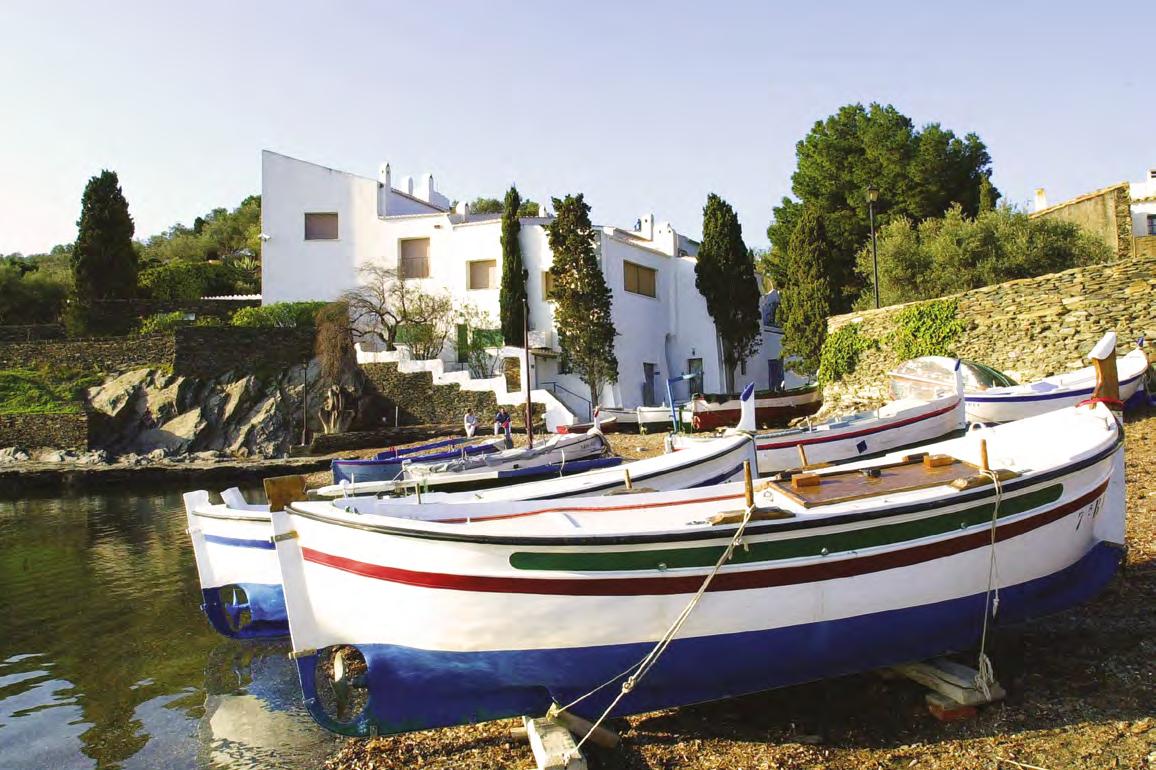
«It’s obvious that other worlds exist, that’s certain; but, as I’ve already said on many other occasions, these other worlds are inside ours, they reside in the earth and precisely at the centre of the dome of the Dalí Museum, which contains the new, unsuspected and hallucinatory world of surrealism» Salvador Dalí
The great genius Salvador Dalí was an artist of boundless imagination, a master of surrealism, a painter who shook the world of contemporary art through his transgressive works. His unlimited artistic enthusiasm led him to explore cubism, futurism, metaphysical painting and all the possibilities opened up by the world of photography and film. His talents extended beyond painting to fashion, advertising, and even set and costume design for a number of ballet productions.
Born in Figueres in 1904, he became a worldfamous painter through an unmistakable style that rose to prominence in the surrealist period, which formed part of the artistic avant-garde of the first half of the 20th century. His creativity transcended all labels and the universal quality of his art owes much to the fact that the Empordà landscape is reflected in most of his works.
The Dalí Theatre - Museum in Figueres, the world’s largest surrealist object, was designed according to
the instructions of the artist himself, who saw the completion of his project in 1974. He created a series of paintings, sculptures and installations designed specifically to be shown in the museum. It was his wish to crown the building with a geodesic dome, making it one of the symbols of the city of Figueres. One of the museum’s rooms houses the sumptuous Dalí Jewels permanent exhibition, composed of 37 jewels designed by the artist in gold and precious stones. In August, the museum opens its doors at night, offering visitors another way to discover the collection. Today, the world famous Dalí Theatre - Museum in Figueres is one of the most visited cultural facilities in Spain.
Since the artist’s death in 1989, the museum has been run by the Gala-Salvador Dalí Foundation, which also manages the other two important sites in the area devoted to the painter’s creative universe: the Gala-Dalí Castle House-Museum in Púbol and the Salvador Dalí House-Museum in Portlligat. Together they form the Dalí Triangle.
The great genius
Salvador Dalí was an artist of boundless imagination, a master of surrealism, a painter who shook the world of contemporary art through his transgressive works.

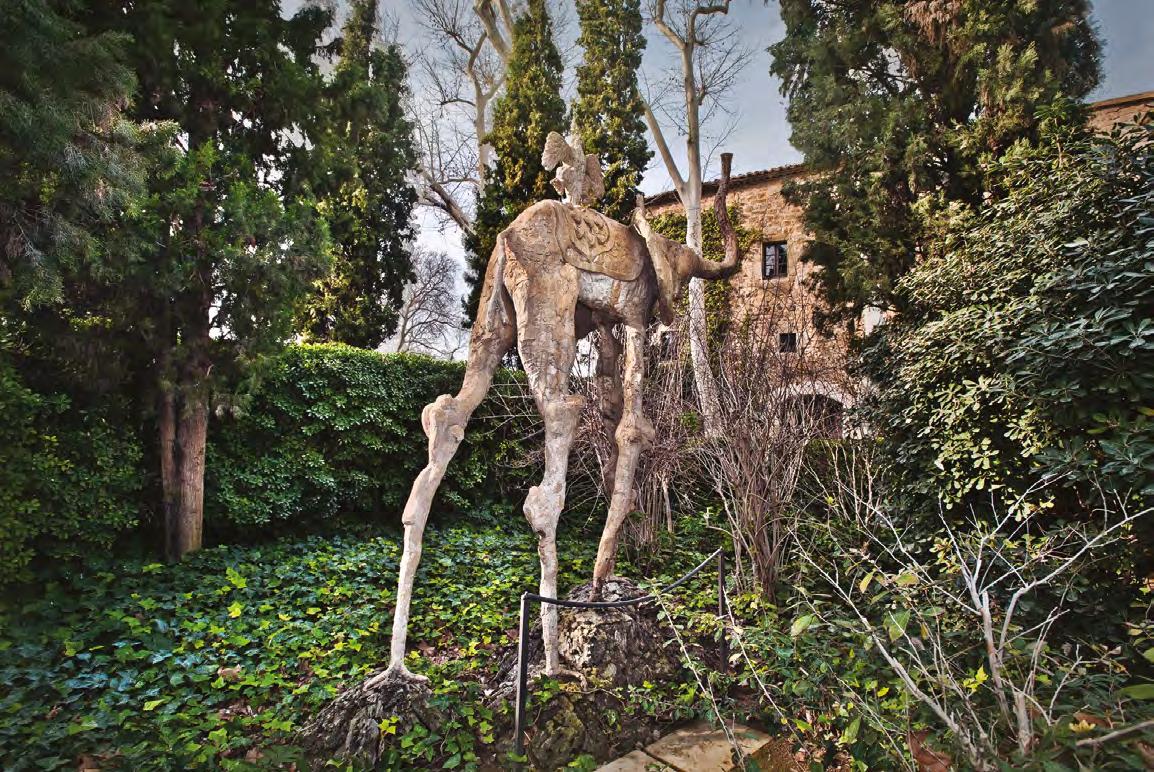
The castle in Púbol was a gift from the painter to his wife and muse, Gala. Portrayed in a huge number of the painter’s works, Gala spent the final years of her life in this manor house in Baix Empordà. A place of rest and shelter for the painter’s wife, it is a mysterious, private, austere and romantic residence with rooms and spaces of great beauty, such as the old kitchen converted into a bathroom, the swimming pool in the garden, the piano room or Gala’s mausoleum. Dalí and Gala met when she was married to the French poet Paul Éluard and the artist invited the couple to spend some time in Cadaqués. From that moment Dalí and Gala established a curious symbiosis that lasted for the rest of their lives.
The painter’s father was from Cadaqués, a fisherman’s village nestled in the heart of Cap de Creus where Dalí found creative inspiration from a very young age. Over time, Dalí purchased a group of fishermen’s cottages next to the beach of Portlligat in Cadaqués, which he turned into his main residence and
painting studio, thus making the town a meeting point for all sorts of artists and intellectuals of the period, such as Luis Buñuel, García Lorca, Marcel Duchamp or Max Ernst.
The Portlligat complex, framed by the idyllic scenery of the bay, has become another site for the exhibition of Dalí’s work, with a labyrinthine structure of courtyards, stairways and welcoming rooms that display furniture and everyday items of the couple.
The unmistakable blues of the sea and sky of Cap de Creus, the white houses of Cadaqués, the tramuntana wind, the capricious rocks of Pla de Tudela and the Empordà landscape inspired and accompanied the artist throughout his life. Visiting the Dalí Triangle is the best way to discover how the landscape of the Costa Brava has become part of universal artistic imagery through the work of the genius Salvador Dalí.
His unlimited artistic enthusiasm led him to explore cubism, futurism, metaphysical painting and all the possibilities opened up by the world of photography and film. His talents extended beyond painting to fashion, advertising, and even set and costume design for a number of ballet productions.
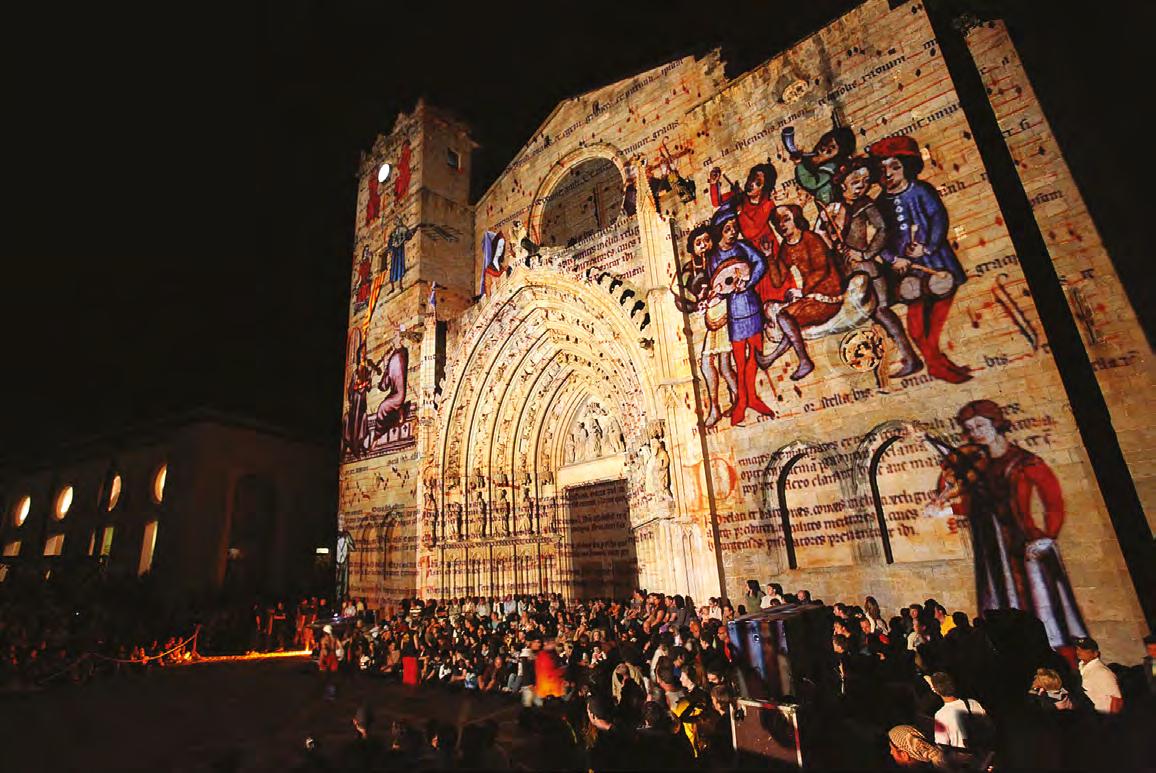
Dance, sing and enjoy the most traditional celebrations: let the festivities begin! Traditional and popular festivals
Together, the Costa Brava and the Girona Pyrenees capriciously shape a land where festivals, traditions and culture converge with the friendly spirit of towns and people who are always ready to receive visitors with the warmest of welcomes.
In every village, town and city, those keen to discover the roots of the place will come across local festivals that usher in the spring, Easter processions or living nativity scenes.
The parades of giants and big-heads (papier mâché costumed figures) are a great way to involve children in a festival that combines dancing, music and traditional imagery. Fire, the main ingredient in the Blanes international fireworks competition, is also the raw material in the correfocs (fire runs) that take place in towns and cities such as La Bisbal d’Empordà or Girona, where a large group parades and dances along the streets to the pulsating rhythm of drums, accompanied by pyrotechnics.
During the Girona, Temps de Flors flower exhibition, the city’s most iconic sites are bedecked with flowers and open to the public.
Mediaeval festivals such as Terra de Trobadors (Land of Troubadours) in Castelló d’Empúries recall the golden age of the province, while craft fairs showcase local products and rituals such as El Pelegrí in Tossa de Mar reaffirm ancient promises. Meanwhile, maritime processions continue to adorn the sea, as do the gatherings of llaguts (Catalan sail boats) in Cadaqués, while the Indiano fairs of Lloret de Mar or Begur celebrate the legacy of émigrés who made their fortune in Latin America and returned home, bringing with them the fashions, architecture and music of the colonies.
The icing on the cake in this calendar of celebrations of the counties of Girona are the Festivals of National Interest, classified as such due to their singularity, long tradition or strength as symbols of identity. They include the procession and Dansa de la Mort (Dance of Death) in Verges on Maundy Thursday, the living Via Crucis (Way of the Cross) in Sant Hilari Sacalm on Good Friday, the festival of the Arbre de Maig (May Tree) and the Ball del Cornut (Dance of the Horned Man) in Cornellà del Terri on Easter Monday, the Ball dels Cavallets, Gegants i Mulassa (Dance of the Little
Horses, Giants and Mule) in Sant Feliu de Pallerols, the festival of Les Enramades (flower carpets) in Arbúcies and the festival of Mare de Déu del Tura (Our Lady of Tura) in Olot.
These ancient, cultural and vibrantly staged celebrations offer visitors the chance to play an active part in local traditions and everyday life. Music, fire and dance transform streets filled with people eager to enjoy the show.
In every village, town and city, those keen to discover the roots of the place will come across local festivals that usher in the spring, Easter processions or living nativity scenes.

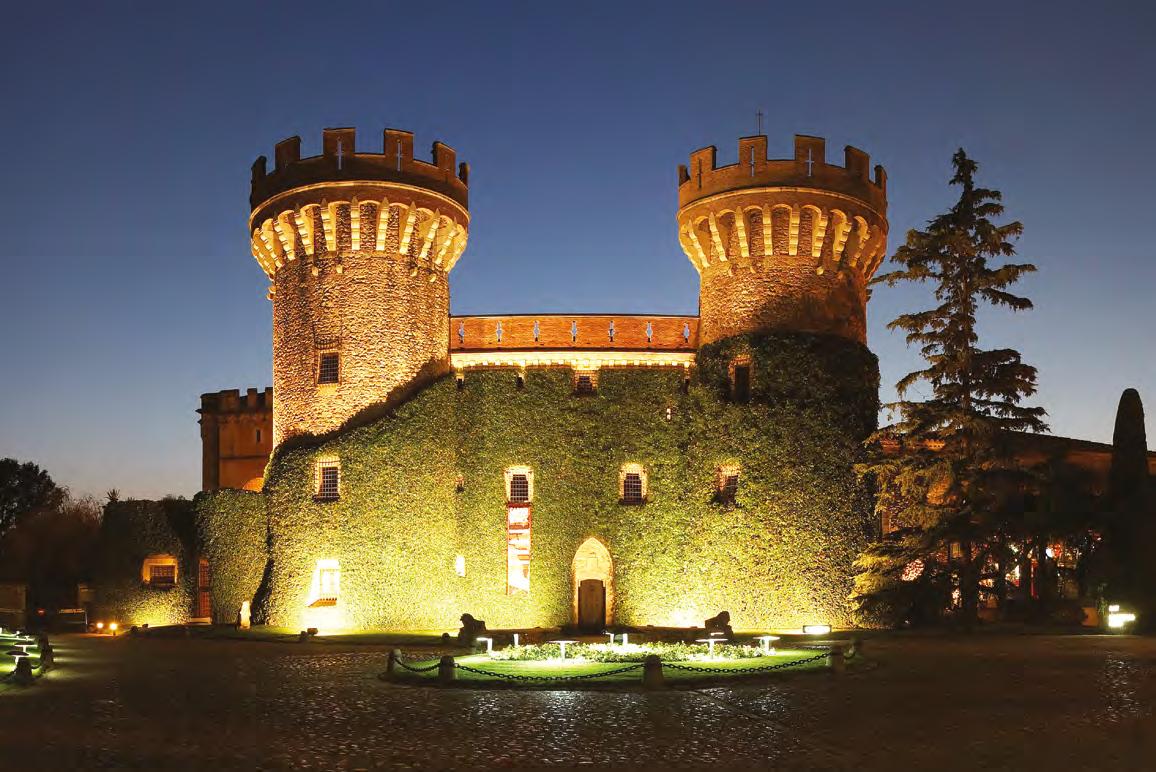
Visit these unbeatable settings to enjoy live cultural performances! Festivals

In addition to its rich heritage, scenery and identity, this area offers a dazzling array of music, theatre, dance, circus and film festivals and events.
With the arrival of the spring and summer months, music festivals and concerts fill some of the area’s most idyllic and magical spots, nestled next to the sea or among the mountains, in gardens and town squares, in monasteries, cloisters and historical centres.
Some of these festivals have achieved international fame, such as the Cap Roig Gardens Festival in Palafrugell, which is held next to the sea in one of the most important botanical gardens in the Mediterranean, or the Castell de Peralada International Music Festival, which schedules everything from opera and ballet performances to concerts by pop and rock stars in an incomparable setting, surrounded by gardens and flanked by two monumental towers. The Porta Ferrada International Festival in Sant Feliu de Guíxols is the longest-established music festival in the Girona area, while the Torroella de Montgrí International Music Festival attracts musicians and music enthusiasts from all over Europe. The Sant Pere de Rodes Festival schedules classical concerts in the incomparable setting of the Cap de Creus Natural Park, and at the Schubertíada in Vilabertran the music of Franz Schubert is performed in a majestic venue, the House of Canons of Santa Maria. Sardana dances and
gatherings (aplecs) take place on promenades and in town squares up and down the country to the sound of special instruments such as the tenora. Concerts of havaneres (colonial sea shanties) accompanied by the traditional cremat (rum flambéed with coffee) make for lively summer evenings, the most popular performance being the one held in Calella de Palafrugell every year on the first Saturday in July, an unmissable event for those who wish to experience one of the Costa Brava’s most magical nights.
Music also echoes in the mountains thanks to a series of festivals that give you the chance to enjoy first-rate concerts in stunning natural settings and at important sites of Catalan Romanesque architecture. Some of the most noteworthy events in the Pyrenees include the Ripoll International Music Festival, the Vall de Camprodon Music Festival, the Llívia Music Festival and the Isaac Albéniz Music Festival in Camprodon, devoted to the great composer who was born there. Melodies from all periods ring out, making the most of the wonderful acoustics of the sturdy churches and chapels of the Pyrenees that for a few days are turned into concert venues.
In the autumn, the theatre comes to Girona and Salt with the Temporada Alta festival, rated by critics as the best festival of its kind in Spain and firmly established as one of the leading events in the European
performing arts calendar. held in the cities of Girona and Salt, one of the highlights of the European performing arts calendar. As for the world of celluloid, the Girona Film Festival is an event designed to open the door of the Catalan film industry to young talent. Music is provided in the form of two of the longestestablished events in their genre: the Girona Jazz Festival and the Black Music Festival of Girona and Salt.
Those who prefer the circus should note down two very special events in their diaries: the Street Circus
Fair of La Bisbal d’Empordà, held in July, and the Girona Golden Elephant International Circus Festival in February, which brings together top circus companies and performers from all over the world.
This is just a small sample of the huge variety of shows and music events that take place on the Costa Brava and in the Girona Pyrenees, a really original way to explore the area, in unbeatable settings where live culture can be enjoyed in all its glory!

C. de Sant Francesc, 5-7 - 17486 Castelló d’Empúries
Tel.: (+34) 972 250 512 informacio@ecomuseu-farinera.org www.ecomuseu-farinera.org
La Farinera is a factory from the late nineteenth and early twentieth centuries. Explore the route that leads from one floor to the other while following the complex journey of wheat grain. Go inside, breathe in the scent, alert your senses and sweep through history and science to learn a bit more about the world of wheat, flour and bread.
Pl. del Monestir, s/n - 17220 Sant Feliu de Guíxols
Tel.: (+34) 972 820 051 info@espaicarmenthyssen.com www.espaicarmenthyssen.com
Carrer Macarnau, 55 – 17800 Olot Tel. : (+34) 972 279 132 espaicrater@olot.cat www.espaicrater.com

From June to October, the monastery of Sant Feliu de Guíxols runs temporary exhibitions from the Carmen Thyssen private collection. It offers high-quality culture that has become a benchmark for art on the Costa Brava.
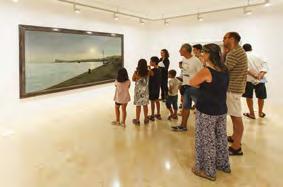
Come and discover a benchmark exhibition about the world of volcanoes. A fully interactive show, with audiovisual displays, immersive experiences, augmented reality, gaming and video mapping. Espai Cràter lets you learn about volcanoes from inside a real volcano: a unique experience designed for all ages.

Espai Ceretània Museum, archaeological site of El Castellot in Bolvir (Cerdanya)
C. de la Corona, 46 - 17539 Bolvir Tel.: (+34) 972 895 001 espaiceretania1@gmail.com www.bolvir.cat
El Castellot demonstrates the ancient significance of this site, which has been inhabited and enjoyed by visitors for many years. The Iberians, Romans and men and women in medieval times were very much drawn to its warmth. The famous Carthaginian general Hannibal Barca and his elephants would most certainly have passed through the territories overseen by this settlement to reach Rome during the Second Punic War. The museum now has a room for permanent exhibitions that has interactive and hands-on resources telling its 2,500-year history and also leads to the archaeological site.
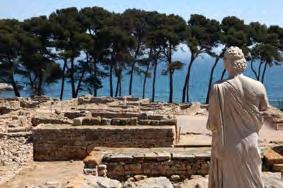

C. de Josep Puig i Cadafalch, s/n - 17130 L’Escala
Tel.: (+34) 972 770 208 macempuries.cultura@gencat.cat www.macempuries.cat
Empúries, which is located by the sea, was the gateway for classical cultures to the Iberian Peninsula. It still conserves the archaeological remains of two cities, one of which was Greek and the other Roman. At the site, considered one of Catalonia’s major historical monuments, visitors can get the feel of what everyday life was like in a city during the classical era.
C. de Santa Llúcia, 8 - 17007 Girona Tel.: (+34) 972 202 632 macgirona.cultura@gencat.cat www.macgirona.cat
The monastery of Sant Pere de Galligants, a gem of Catalan Romanesque architecture, provides a glimpse of the most ancient human history and culture in the province of Girona. The series of ancient objects on exhibit help visitors to enjoy a fantastic journey from prehistoric to medieval times.


Afores, s/n - Puig de Sant Andreu - 17114 Ullastret
Tel.: (+34) 972 179 058 macullastret.cultura@gencat.cat www.macullastret.cat
Members of the Culture and Identity marketing club
The Iberian city of Ullastret, located on a small hill, presides the gentle, peaceful landscape of the Empordà region. One of the largest pre-Roman settlements in the Iberian Peninsula grew here from the sixth to second centuries BC and became the capital of the Indigete people. A walk along its streets, among the houses and aristocratic buildings, leads to the magnificent wall and a visit to the monographic museum will transport visitors to 2,500 years into the past and to the heart of Iberian culture.
Pda. de la Catedral, 12 - Palau Episcopal - 17004 Girona
Tel.: (+34) 972 203 834 museuart_girona.cultura@gencat.cat www.museuart.cat
Girona Art Museum, located in the former Episcopal Palace, is home to a remarkable art collection, with works dating from the Romanesque period until the early twentieth century. The most significant items include the altar stone from Sant Pere de Rodes (tenth century), the altarpiece of Sant Pere de Púbol (fifteenth century), the altarpiece panels from Sant Feliu de Girona (sixteenth century), the altarpiece of Segueró (sixteenth century) and the sculpture Against the invader (nineteenth century), all in an incomparable historical setting.
Ethnographic Museum of Ripoll
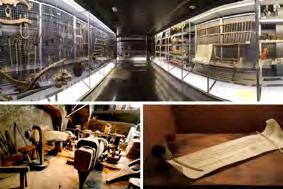

Pl. de l’Abat Oliba, s/n - 17500 Ripoll Tel.: (+34) 972 703 144 museuetnografic@ajripoll.cat www.museuderipoll.org
The Ethnographic Museum of Ripoll, the first ethnographic museum in Catalonia, boasts a rich, interesting collection of tangible and intangible heritage representative of the Ripollès region and of the Pyrenees in Girona province. It is a genuine representation of Catalan culture over the years, which notably includes collections associated with shepherds, farmers, popular religion, wrought iron, firearms and Catalan ironwork. The Museum also offers the possibility to visit the Farga Palau, the last iron smithy, which closed in 1978, and the Scriptorium, a permanent exhibition that reveals how important Ripoll monastery was from the tenth to the twelfth centuries in the production of manuscripts.
C. de la Força, 8 - 17004 Girona Tel.: (+34) 972 216 761 callgirona@ajgirona.cat www.girona.cat/call
One of the best ways to discover the Jewish legacy in Girona is to take a walk through the picturesque alleyways of the historic Jewish quarter (known as the “Call”) and to visit the Museum of Jewish History, a tangible testimony of the time when Jewish communities lived in medieval Catalonia. The Call de Girona Board has set about the physical and cultural recovery of Jewish heritage in Girona and the urban renovation, galvanisation and promotion of the historic Jewish quarter.
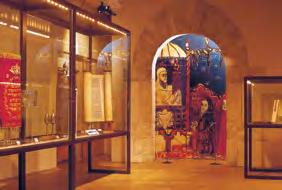
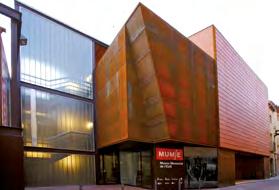

C. de Sant Pere, 1 - 17600 Figueres Tel.: (+34) 972 504 585 info@mjc.cat www.mjc.cat
A trip to the magical world of toys. Located in the old country house of the ‘Barón de Terrades’ (1767), it is considered the third most important toy museum in the world. In its three floors, 7,000 games and toys are exhibited, from a total collection of 20,000 . Come and meet, among others, Don Osito Marquina, the most beloved toy of Ana María and Salvador Dalí and Federico García Lorca. A museum to visit, to play, to enjoy day and night, to learn playing, to live unique experiences, to dream ... and to keep the imagination awake.
C. Major, 43 - 17700 La Jonquera Tel.: (+34) 972 556 533 info@museuexili.cat www.museuexili.cat
The Exile Memorial Museum (MUME) is an interpretation centre at which to remember those forced into exile by the Civil War in Spain and in Catalonia. It is a space devoted to memory, history and critical reflection. The MUME, located at the border crossing through which most exiles fled, combines the functions of a museum with those of historical research and educational dissemination.
Pl. de Roig i Soler, 1 - Vila Vella - 17320 Tossa de Mar
Tel.: (+34) 972 340 709 museu@tossademar.org www.tossademar.cat/museu

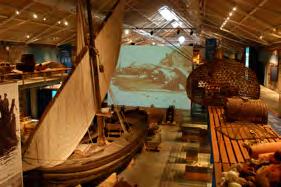
Moll Pesquer, s/n - 17230 Palamós
Tel.: (+34) 972 600 424 museudelapesca@palamos.cat www.museudelapesca.org
C. del Tren, 58 – 17242 Quart Tel.: (+34) 972 469 370 / 972 469 171 info@museuterrissa.cat www.museuterrissa.cat / www.quart.cat
The Museum of Tossa de Mar, which is set in the very heart of the walled compound of the Old Town, houses the testimony of local and international artists who used the town as a source of inspiration and expressed the essence of this coastal area in their works.
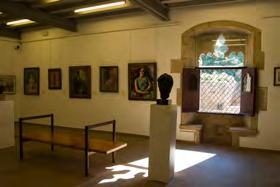
The Museum of Fishing in Palamós is the only museum of its kind on the Mediterranean. The past, present and future of fishing are on display here in the permanent exhibition and through a series of activities associated with the sea and fishing on the Costa Brava. The Espai del Peix, which is the museum’s workshop area, also offers activities through which to discover and appreciate fish fresh from the port of Palamós and the cooking and tasting of seafaring cuisine.
The Quart Pottery Museum is located in a historic building and is an open cultural centre that tells the story of what has been a characteristic feature of the town for centuries: handcrafted pottery production. The museum revolves around the pottery industry, which has decisively influenced the town’s human, economic, cultural and social character.
Pda. del Castell, 28 - 17600 Figueres
Tel.: (+34) 972 677 505 reserves@fundaciodali.org www.salvador-dali.org
Salvador Dalí, one of the most influential artists of all time, was the maximum exponent of surrealism, a genius and a unique character. Explore his creative universe by visiting the Dalí museums where art and landscape are side-byside in this region known as Empordà.
Museum of the Mediterranean
C. d’Ullà, 31 - 17257 Torroella de Montgrí
Tel.: (+34) 972 755 180 info@museudelamediterrania.cat www.museudelamediterrania.cat

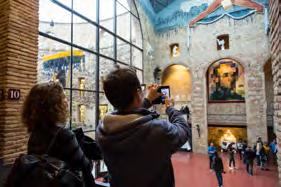
Pg. de Camprodon i Arrieta, 1-2 - 17310 Lloret de Mar
Tel.: (+34) 972 364 735
lloret-turisme@lloret.org www.lloretdemar.org
The Museum of the Mediterranean, which is located in Can Quintana, an iconic mansion in the historic centre of Torroella de Montgrí, is an open, interactive space in which to use all five senses to discover the local environment and the Mediterranean Sea. Sound and music provide a common thread to help visitors to explore the local area and to discover the history and culture that unite Mediterranean peoples. This they do while following an itinerary designed to encourage reflection on the natural and cultural environment that we, its inhabitants, share. It offers a unique way of exploring the medieval town and the Montgrí, Medes Islands and Baix Ter Natural Park.
Lloret de Mar Open Museum (MOLL) is an imaginary network with which visitors can discover different places of historical, cultural and natural interest in Lloret de Mar. It is an open space with no walls, located at different spots, from which to discover the town’s heritage at sites such as the gardens of Santa Clotilde, the Can Font museum-house, the Art Nouveau cemetery and the Museum of the Sea.
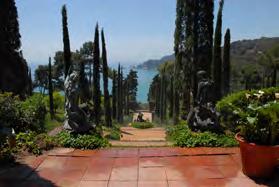
Av. de l’Església, 1 - 17246 Santa Cristina d’Aro Tel.: (+34) 607 237 911 - 667 292 500 contacte@granmuseudelamagia.com www.granmuseudelamagia.com
This Catalan house with chapel from 1800 is home to the large collection on magic gathered together by the international illusionist Xevi throughout his long artistic career around the world. It is a collection that includes automatons, posters, magic props from different periods, paintings, packs of cards, tarots, books, curious objects and photographs. It is the only museum of magic that has been rewarded and acknowledged by the International Federation of Magic Societies (FISM) as the world’s largest and most original.
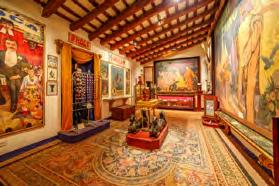
Girona Province Territorial Network of Museums
C. de Pedret, 95 - 17007 Girona Tel.: (+34) 972 204 637 samgirona.cultura@gencat.cat www.patrimoni.gencat.cat/xarxamuseusgirona
The Network of Museums in the Counties of Girona works for the 26 museums spread over an extensive territory between the sea and the mountain. These museums introduce and explains us about their cultural heritage: history, cinema, games, crafts, archaeology, ethnology, the natural environment, the sea, technology, and art.
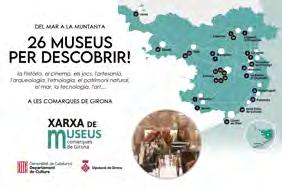
C. de l’Abadia, 4 - 17760 Vilabertran Tel.: (+34) 972 508 787 vilabertran.cultura@gencat.cat monuments.mhcat.cat
This magnificent Romanesque monumental site, located in the municipality of Vilabertran, is formed by the church, the cloister and the abbot’s palace. Culturally, it not only offers a visit to the site’s treasures, but also temporary art exhibitions and the prestigious Schubertiade music festival, which is held at the abbey.

Camí del Monestir, s/n - 17489 El Port de la Selva Tel.: (+34) 972 387 559 santperederodes.cultura@gencat.cat monuments.mhcat.cat
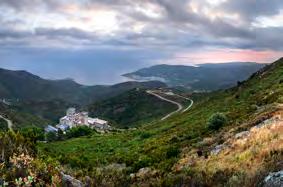
Castell Nature Site - Cap Roig - 17230 Palamós Tel.: (+34) 972 601 244 museudelapesca@palamos.org www.museudelapesca.cat

Hostalric castle

Av. de la Fortalesa, s/n - 17450 Hostalric Tel.: (+34) 972 874 165 turisme@hostalric.cat www.turismehostalric.cat
One of Catalonia’s most exceptional medieval monumental sites, which includes the monastery of Sant Pere de Rodes, the former village of Santa Creu and the castle of Sant Salvador, overlooks the Cap de Creus peninsula from the Serra de Verdera range. The imposing monastery, which is a remarkable example of Catalan Romanesque architecture, has long attracted visitors and pilgrims who come in search of the peace and spirituality radiated by its landscape.
The Iberian settlement of Castell, on the coast to the east of Palamós, lies on a small peninsula that the Indigete tribe settled on account of its exceptional surroundings. The site’s archaeological remains provide an idea of the structure of the town and the settlement’s defence system, all with the scenery of the Costa Brava as an idyllic backdrop.
The town of Hostalric, which was awarded Site of National Interest status in 1963, boasts one of the most remarkable monumental legacies from medieval Catalonia and is protected by an imposing modern-era military fortress. At Hostalric castle you can travel back in time by visiting its interpretation centre and taking a stroll through the walled enclosure where you will discover some unique corners full of history. There are also two particularly wellconserved towers, which can be observed on a walk along the spectacular walls, 600 metres of which are passable.
Palamós lagorga@palamos.cat www.lagorga.cat
The Palamós Festivals brand promoted by the Culture Area of the Palamós City Council includes the musical and performing arts festivals that are carried out in the municipality, of their own creation, genuine and differentiated. These are the Rumb (A) Palamós festival that take place on Fridays in July, the Amb So de Cobla festival the first fortnight in August and the Onadance, the dance and movement arts festival in autumn.
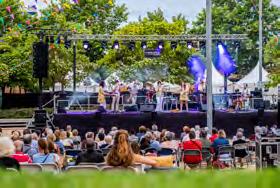
Girona and Salt comunicacio@blackmusicfestival.com www.blackmusicfestival.com
Calella de Palafrugell info@caproigfestival.com www.caproigfestival.com
Year after year, the present and past of Black music extends from Girona and Salt to other towns in the province of Girona and to the rest of the country. A prestigious festival, packed with concerts and activities giving audiences the chance to enjoy the best local and international artists.
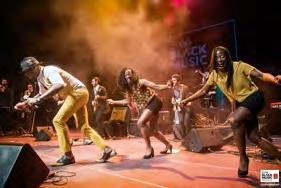
In summer, Cap Roig and its delightful botanical garden, one of the best on the Mediterranean coast, fill up with stars from the world of music. An exceptional variety of sun and sand, cuisine, water sports, golf and heritage in the Costa Brava’s Baix Empordà region combines with a festival that boasts big names from the international music scene.


info@artelier.cat www.artelier.cat/estiujazz
This cycle of young performers aims to highlight the talent of young jazz musicians in our country. It wants to promote and exhibit different innovative and quality proposals from groups and soloists, students or graduates, with the purpose of offering them a stage to start and/or continue developing their musical career as professional musicians.
Begur turisme@begur.cat www.festivalbegur.cat
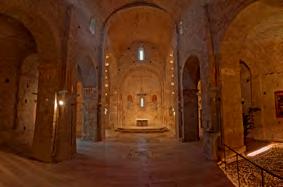

Cervià de Ter ibercamera@ibercamera.cat www.daysofwisdom.org
Through its music festival Begur has pledged itself to the democratisation of culture and artistic eclecticism. Everyone can therefore find something to suit them, in its free concerts and other performances at very affordable prices. The festival offers diverse genres, performed by leading figures who fill the Escoles Velles building, the Mas d’en Pinc and the historic centre of the town of Esclanyà.
Maria João Pires is the driving force and director behind this summer festival, which will be held in August in Cervià de Ter. The magnificent construction of the ancient monastery is the venue chosen for this three-day event. Concerts, some of which are dramatized, together with other art forms based on a dialogue between music, literature, theatre and dance, merge to bring you Days of Wisdom.
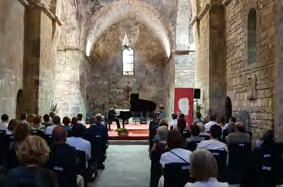

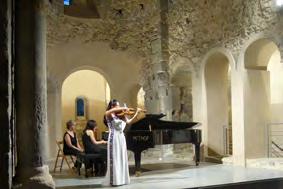
El Port de la Selva opusartiscultura@gmail.com www.festivalsantpere.com
Camprodon isaac-albeniz@camprodon.cat www.albeniz.cat
Camprodon Valley Music Festival Camprodon mancomunitat@valldecamprodon.org www.fmvc.cat
The imposing Benedictine monastery of Sant Pere de Rodes, set in the heart of the Cap de Creus Natural Park, lends its name to this festival, which combines music, heritage and nature. Piano and chamber music concerts are held in the monastery’s church, the acoustics of which are exceptional. The festival also includes an alternative section in the church of El Port de la Selva, where concerts of spiritual and folk music are held.
The Isaac Albéniz Festival is held at the monastery of Sant Pere de Camprodon in parallel with a prestigious international music course. The audience has the privilege of seeing performers that in the not too distant future will become leading figures in European classical music. Set in the heart of the Girona Pyrenees, the Camprodon Valley welcomes the visitor with its exuberant nature.
Every summer the municipalities in the Camprodon Valley, in the very heart of the Girona Pyrenees, host this festival, which showcases what the area has to offer musically and culturally. The festival is a carefully thought-out event of high quality and varied styles that involves small and medium-format concerts to encourage bonding among artists and audiences who together create an experience that fills the valley with music.
Rumba and Catalan Music Festival, Tossa de Mar
Tossa de Mar festes@tossademar.org www.infotossa.com
The Tossa de Mar Rumba and Catalan Music Festival offers activities for all the family. This event, which includes a large concert on the main beach, is the best way of enjoying music and the extraordinary beauty of the old town of Tossa.
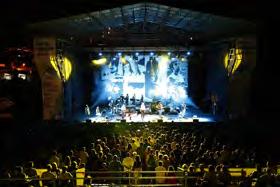

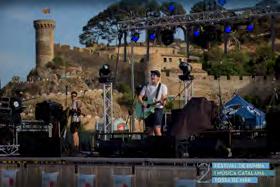
Peralada info@festivalperalada.com www.festivalperalada.com
Every summer, the medieval monumental site of the castle of Peralada and its gardens host a major international music festival. History and prestige define this event, and artistic proposals by leading figures from the world of international opera, dance and pop, as well as its exceptional setting have turned this Empordà town into the centre of culture and recreation of summer nights on the Costa Brava.
Sant Feliu de Guíxols theproject@theproject.es www.theproject.es
The Porta Ferrada Festival, which was first held in Sant Feliu de Guíxols in 1958, is Catalonia’s longest-standing summer festival. It is unique on the Costa Brava because of its programme, which is open to all artistic disciplines and features wellestablished names and emerging talents on the national and the international scenes.
Different towns in the Baix Empordà region comunicacio@linkproduccions.com www.itacacultura.cat

Torroella de Montgrí info@festivaldetorroella.cat www.festivaldetorroella.cat
The ÍTACA, Culture and Action Festival combines massive concerts with small-scale musical performances in some of the most beautiful spaces of l’Empordà. Quality cultural proposals and affordable price, with the aim of claiming culture as a basic right, offers a combination of music, theatre and other recreational activities and reflection. The festival starts with the arrival of Holy Week and finishes at mid-summer.
Music that sounds just as its creators imagined and musicians who play it with enthusiasm and commitment to convey its full emotion to audiences enjoying the summer nights of the Empordà region. The Torroella de Montgrí Festival is a jewel of Catalan cultural heritage that since 1981 has become established in Europe as a byword for classical music. A new feature of the festival are the Singulars concerts, an initiative that combines a hard-to-repeat programme with sites in the town such as palaces, churches, etc., outside its usual base at the Espai Ter Auditorium.
Sarrià de Ter and Girona insomnifest.press@gmail.com www.insom-ni.info

The In-Somni festival is a pioneer of its kind and a leading showcase of music independent in Catalonia. With nineteen editions this year expands the spaces and scenarios where it will take place. Every year, the festival presents new groups to the public, as well as already consecrated groups, thus achieving a powerful and eclectic formation. Fun is guaranteed and good music too!

L’Escala info@portalblau.cat www.portalblau.cat
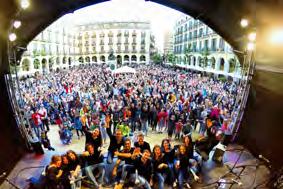
Girona info@gironacappella.cat www.gironacappella.cat
Jazz l’Estartit L’Estartit info@jazzestartit.cat www.jazzestartit.cat
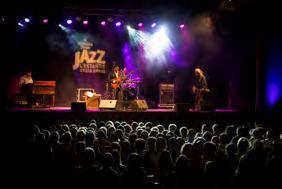
In July and August, the Portalblau Music and Art Festival of the Mediterranean offers an excellent programme that includes music, circus and dance in some stunningly beautiful settings by the sea, such as the Greek agora at the ruins of Empúries, the Mar d’en Manassa cove and the Alfolí de la Sal. The summer festival of L’Escala offers the public Mediterranean-themed cultural experiences by artists from all over the world.

This international festival focuses on a cappella, or non-instrumental, solely vocal music, performed by the best national and international groups. It takes place during the Girona Flower Festival, is the only event of its kind in all Spain and has now become a benchmark outside the country. It seeks to offer emotion, quality and originality.
L’Estartit is a summer holiday town and a paradise for sub-aqua diving that has a delightful seafront, embellished by the colours of the sea and palm trees, and a port where visiting sailing boats gather on summer nights. This year, El Molinet, where the Montgrí massif tumbles into the sea, will become a vibrantly and frantic stage for jazz for four summer nights. Concerts and DJ jams run the evening into the early hours of the morning because jazz is unpredictable and constantly shifts the scenic landscape. The village will complement the experience with a well-run bar and restaurant service. Why not find out about it?
Les Planes d’Hostoles planestiueja@lesplanes.cat www.planestiuejat.cat
Once again, a new edition of the Planestiueja’t summer festival of the Garrotxa region brings an eclectic musical programme carrying the slow concerts hallmark, merging music and nature for our pleasure. Every Saturday in July and August, the concerts in a number of charming spots in the area of Les Planes d’Hostoles will make for an unforgettable musical experience.
Castelló d’Empúries and Roses info@sonsdelmon.cat www.sonsdelmon.cat
Ibercamera Girona Season
Barcelona webgirona@ibercameragirona.cat www.ibercameragirona.cat
This festival is an attractive summer event that brings together music, cuisine, wine-tasting and heritage at marvellous spots in the Empordà region. It is the perfect combination for lovers of culture, food and wine!
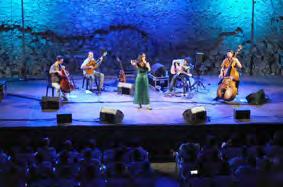

Ibercamera Girona is a well-established classical music season that brings the world’s major orchestras and soloists to the city of Girona. Since the construction of the Auditorium in 2008, the Ibercamera Season has helped to consolidate the city’s orchestral tradition and has placed it firmly on the map of international symphony orchestras.

(a)phònica, Festival de la Veu de Banyoles
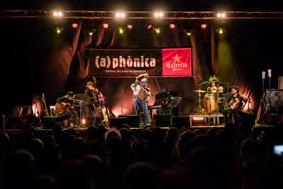
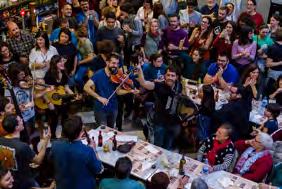
Banyoles aphonica@altersinergies.com www.aphonica.banyoles.cat
Cassà de la Selva cantut@cantut.cat www.cantut.cat
The (a)phònica Banyoles Vocal Festival is an event devoted to every aspect of vocals that takes place in Banyoles in June and includes concerts and parallel activities at which to explore an instrument with which we are all endowed. The programme features different styles and presents artists and groups with special proposals and characteristic voices.
The Càntut project was established in 2012 to collect and disseminate the oral musical heritage of Girona province. It has three facets: an online songbook, with over a thousand works collected by song hunters and sung by older generations; productions, with real projects that combine oral tradition with modernity; and the festival, which takes place in the autumn on different stages in Cassà de la Selva and is intended to bring these repertoires to life. A festival that also looks for spaces and moments to sing in community.
Cadaqués International Music Festival

Cadaqués info@rgb.cat www.festivalcadaques.com
Cadaqués is one of the Costa Brava’s most charming coastal towns. As every year, its idyllic corners are prepared to host the Cadaqués International Music Festival, which includes a full programme of performances, educational activities, daily music and a broad range of activities for all age ranges.
Figueres info@agitartcompanyia.com www.figueresesmou.cat
Figueres es MOU brings street performances, creative classes, exhibitions and video-dance for all kinds of audiences to the town of Figueres. The venues selected around the town are taken over by close to 80 professional performers from different Spanish and international dance companies so they may showcase their art. This festival’s growing success is largely thanks to the efforts of the local AGITART association of dance and movement professionals.

Girona and Salt info@temporada-alta.com www.temporada-alta.com
Girona info@festivaldelcirc.com www.festivaldelcirc.com
One of the leading festivals in Southern Europe, considered by critics and press alike the top scenic arts festival in Spain, Temporada Alta offers, over two months, a broad programme of a variety of genres and styles, mainly theatre, music, dance and circus.
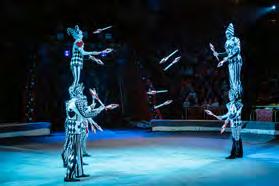
Since its creation, the Circus Festival has become an international benchmark for highquality circus. Considered to rank among the world’s five best festivals, every year this event offers 24 shows, previously unseen in Europe, performed by over 80 artists from a dozen countries. Performances take place in the pole-free big top that is erected in the Devesa Park in February. Artists compete before a jury of experts to win one of the Dalinian Golden Elephant awards, the event’s top trophy, after which the festival is named.

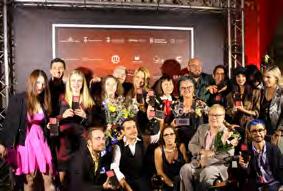
Girona info@gironafilmfestival.com www.gironafilmfestival.com

Begur info.begurfilmfestival@gmail.com www.begurfilmfest.com
17257 Torroella de Montgrí Tél. : (+34) 696 146 698 info@fimag.com www.fimag.cat
The Girona Film Festival is the TALENT FESTIVAL. Artists and technicians present their premiere to the public.The Festival is ranked in the TOP 100 by Filmfreeway with 2M filmmakers and 12K festivals. Workshops, presentations, cocktails, parties and other activities generate networking of interest for artists, technicians, industry students and the public who can interact with the talent.
The Begur International Film Festival was first held in 2015 upon the initiative of the Begur Trade and Tourism Association and in collaboration with film professionals. Since then, it has become established both as an international benchmark for comedy and for new creators and as a meeting point for cinema lovers and professionals. The event also provides a platform for generating new projects and shoots in Begur and on the Costa Brava.
The Torroella de Montgrí International Magic Festival (FIMAG) has been growing into southern Europe’s major festival of magic and is suitable for everyone. The quality of the programme and its location on the Costa Brava are complemented with a broad range of cuisine and leisure options and the natural and heritage wealth of the Empordà region.

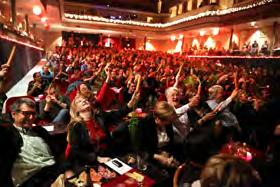
17600 Figueres
Tel.: (+34) 972 550 519 info@festivalcomic.cat www.festivalcomic.cat
The Figueres Comedy Festival has been shaking audiences with laughter for ten years now with a programme crammed with stars from comic theatre and with monologues, clowns and mime. It perfectly combines free street shows with theatre performances and family events –the great majority– and theatre for adults.
C. des Cotxe, 2A – 17488 Cadaqués
Tel. : (+34) 972 258 315 turisme@cadaques.cat www.visitcadaques.org
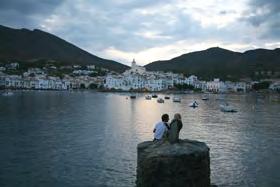
Cadaqués has its own peculiar character. Its unique local dialect, artists and galleries, the picturesque beauty of the landscape, the Municipal Museum, the old town, the church and traditional local festivals make this town an idyllic place in which visitors to the Costa Brava can soak up the culture of the Alt Empordà region.
Carretera de Fogueres, s/n Arbúcies – Sant Feliu de Buixalleu, Girona.
Tel.: (+34) 972 860 908 info@montsoriu.cat www.montsoriu.cat
Montsoriu Castle, the most important Gothic castle in Catalonia, invites you to learn about its legends and stories. Immerse yourself in the medieval world through the castle of Montsoriu, the imposing fortress that the powerful viscounts of Cabrera had at the foot of the Montseny. The visit to the three enclosures of the castle and the rooms dedicated to the medieval period of the Museu Etnològic del Montseny will bring you closer to a historical period that will surely captivate you.
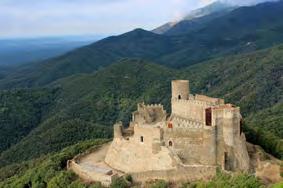
Parc de l’U d’Octubre de 2017 17111, Vulpellac turisme@forallac.cat www.forallac.cat; www.visitperatallada.cat
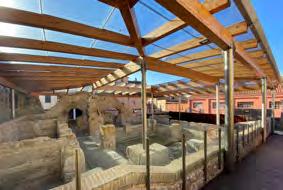
In the heart of the Baix Empordà, between the best coves and beaches of Costa Brava and the singular Gavarres massif, you will find the municipality of Forallac, which brings together the historical centres of Vulpellac, Fonteta, Canapost, Peratallada, Sant Climent de Peralta, Santa Susanna de Peralta and Fitor. These villages form a historical, cultural and natural reality that allows us to get closer to the most genuine essence of the Empordà.
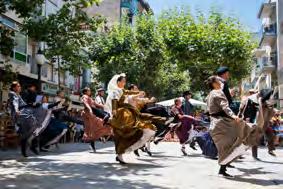
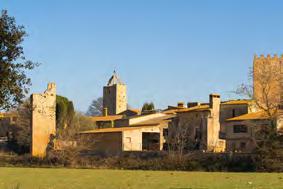
Plaça de Catalunya, S/N 17300 Blanes 972330348 turisme@blanes.cat www.blanescostabrava.cat
C. de Vall-llobera, s/n - 17455 Caldes de Malavella Tel.: (+34) 972 480 103 turisme@caldesdemalavella.cat www.visitcaldes.cat
Blanes is an active and lively city all year round, having a wide variety of cultural, leisure, food and sports activities for all ages: local celebrations, concerts, exhibitions, courses, fairs, Festa Major, fireworks. The variety of celebrations is an example of our people’s personality. Carnival, Corpus, Co-patrons celebration, Christmas, Three Kings, Holy Week are celebrated our own way...
Over the centuries thermal water has shaped the town of Caldes de Malavella as one of its main symbols of identity. The Roman thermal baths on the hill of Sant Grau bear faithful testimony to this. Art Nouveau and noucentista houses make their presence felt at many points of the town such as in the Rambla Recolons and the Rambla d’en Rufí.

Pl. de l’Escorxador, 2 - 17600 Figueres Tel.: (+34) 972 503 155 turisme@figueres.org www.turismefigueres.com
C. de Mossèn Cinto Verdaguer, 4 - 17250 Platja d’Aro Tel.: (+34) 972 817 179 turisme@platjadaro.com www.platjadaro.com
Av. de l’Onze de Setembre, 5 - 17255 Begur Tel.: (+34) 972 624 520 turisme@begur.cat www.visitbegur.com
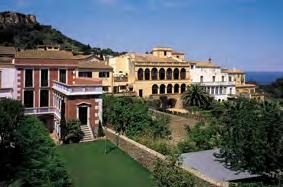
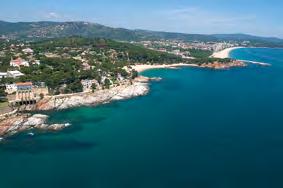
Figueres is the city of Empordà region. Its main appeal are culture and shopping. It is located 15 kilometres away from the Mediterranean Sea, it lies at the foot of the Pyrenees and it is surrounded by three natural parks. Enjoy the fascinating Castle of Sant Ferran, the Dalí Theatre-Museum and the other museums of the city, such as the Empordà Museum and the Toy Museum of Catalonia. Do not miss the regional cuisine, which brings together tradition and creativity, ingredients from the sea and from the land, as well as the Empordà wines.
Their excellent geographical location next to the sea and the main roads, their abundance of shops, nightlife and leisure and high-quality tourist services are some of the major appeals of Platja d’Aro, Castell d’Aro and S’Agaró. These areas, which can be enjoyed throughout the year, have made Platja d’Aro a major destination on the Costa Brava and one of the most sought-after on the entire Mediterranean.
Begur, a town with a deeply historic character, lies at the foot of the medieval castle. Coral farmers, fishermen and returnees from the Americas have shaped brilliant episodes of a history reflected in every corner of the town that lovers of Empordà culture enjoy every time they visit.
Av. de l’Onze de Setembre, 16 - 17800 Olot Tel.: (+34) 972 271 600 info@turismegarrotxa.com www.turismegarrotxa.com

Expressions of art are constant throughout the Garrotxa region. Different archaeological sites point to the presence of human settlements in the region for thousands of years. Since the times of ancient settlers to the present day, art has developed extensively in all its forms; from Romanesque, Renaissance and Baroque to Art Nouveau and contemporary art. This heritage can be enjoyed on any of the 15 theme-based activities run by Garrotxa Cultour, which have been created by Turisme Garrotxa, the regional board of tourism for this land of volcanos.
Pg. de Sant Salvador, 25-27 - 17430 Santa Coloma de Farners Tel.: (+34) 972 841 702 info@laselvaturisme.com www.laselvaturisme.com
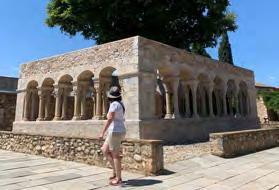
La Selva is a region rich in contrasts with a wide range of activities for all tastes. From the sea on the Costa Brava, the plain and the Ter-Brugent zone to the mountains of Montseny and Guilleries, discover spots, landscapes, history and tradition that will not fail to impress.
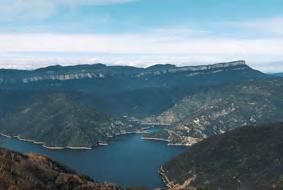
Pl. de la Peixateria, 6 - 17491 Peralada Tel.: (+34) 972 538 840 oficina.turisme@peralada.cat www.visitperalada.cat
This ancient town attracts visitors with its historical character and rich cultural offer. Narrow streets, churches and the municipality of Vilanova de la Muga surround the Sant Domènec Cultural Tourism Center, made up of the Town Museum and the 12th century Romanesque cloister, the town’s oldest monument, recently restored. Ramon Muntaner, an illustrious son of the town who appears on the panels of the Historical Route and in the Town Museum.
C. de Clerch i Nicolau, 2 - 17600 Figueres Tel.: (+34) 972 514 431 turisme@altemporda.cat www.empordaturisme.com
C. dels Tarongers, 12 - 17100 La Bisbal d’Empordà Tel.: (+34) 972 642 310 turisme@baixemporda.cat www.visitemporda.com
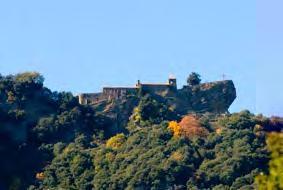
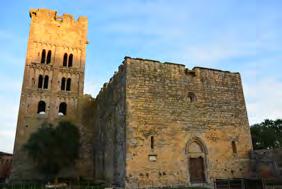

C. de Berenguer Carnicer, 3 - 17001 Girona
Tel.: (+34) 972 011 669 turisme@girones.cat www.turismegirones.cat
The Alt Empordà region, which lies in the northern section of the Costa Brava, has an extraordinary cultural and scenic wealth that includes historical and architectural heritage of great interest such as the dolmens and menhirs of the Albera massif and Cap de Creus peninsula, the Greek and Roman remains at Empúries and the citadel of Roses, Romanesque churches, the monasteries of Vilabertran, Sant Quirze de Colera and Sant Pere de Rodes, the Gothic-style basilica of Castelló d’Empúries, the castle of Sant Ferran at Figueres, Art Nouveau buildings, the Dalí TheatreMuseum in Figueres and the Salvador Dalí HouseMuseum in Portlligat.
The Baix Empordà is a naturally rich region with typically Mediterranean features and coves and beaches formed by inlets and cliffs. Culture and historic heritage provide the focal points of its different towns. The character of the people and a broad range of activities and services make this zone the ideal place in which to spend a few days on holiday.
The Gironès region, located halfway between the sea and the mountains, is home to rural villages and idyllic spots that lie at a scant distance from its splendid capital, Girona. Together, the 27 municipalities boast different charms and iconic sites, fairs, festivals, events and traditions that make the Gironès an active and dynamic region with an enviable wealth of nature and culture. In short, it is an inland destination at which to combine leisure, nature and business that delivers quality of life with each stay.
C. de Catalunya, 48 - 17820 Banyoles
Tel.: (+34) 972 573 550 turisme@plaestany.cat www.turisme.plaestany.cat
The Pla de l’Estany region is an ideal place for relaxing in one of the country’s most exceptional and diverse natural environments, the most characteristic feature of which is the lake of Banyoles. Enjoy its flora and fauna by car, by bicycle, on horseback or simply on foot, as well as a broad range of sporting activities and adventure pursuits.

Rbla. de la Llibertat, 1 - 17004 Girona Tel. (+34) 972 010 001 turisme@ajgirona.cat www.girona.cat/turisme
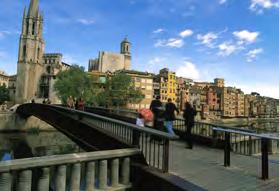
Girona is particularly remarkable for a living culture that boasts arts, performing arts and audiovisual festivals throughout the year, and for its monumental and historical heritage, the main features of which are the Jewish quarter and the cathedral of Santa Maria. Together with the city’s six museums, they stage regular events and activities for all the family. Cuisine, sport, shopping, active tourism and congresses round off the city’s appeal.

Av. Generalitat, 33 - 17200 Palafrugell
Tel.: (+34) 972 300 228 turisme@palafrugell.cat www.visitpalafrugell.cat
The beach towns of Calella de Palafrugell, Llafranc and Tamariu, the rural centers of Llofriu and Ermedas and Palafrugell town itself, form this township that brings together history, culture, industry, nature, coves and beaches, paths, gastronomy and shops. With a unique landscape and activities for all tastes, Palafrugell is a great option for long holidays or short getaways to escape from the routine and to connect with nature and culture in the very heart of Costa Brava.
Valley of Camprodon Tourist Office
C. de Sant Roc, 22 - 17867 Camprodon Tel.: (+34) 972 740 010 turisme@valldecamprodon.org www.valldecamprodon.org

The Valley of Camprodon is a place of great natural beauty. Located in the eastern Pyrenees, it has a unique landscape, and towns and villages that have inherited Romanesque art, traditions and a mountain lifestyle. The municipalities of Camprodon, Llanars, Molló, Sant Pau de Segúries, Setcases and Vilallonga de Ter are extremely lively yet peaceful and quiet. They are the ideal place to enjoy the surroundings and an excellent assortment of social, cultural, nature, mountain, sports and adventure activities.
Pl. dels Homes, 1 - 17486 Castelló d’Empúries Tel.: (+34) 972 450 802 turisme@castello.cat www.castelloempuriabrava.com
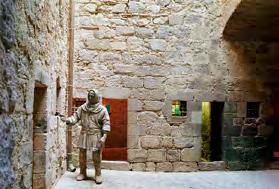
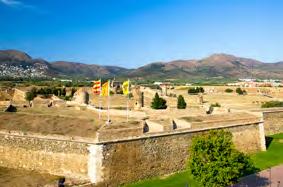
Av. de Rhode, 77-79 - 17480 Roses
Tel.: (+34) 972 257 331 turisme@roses.cat www.visit.roses.cat
Castelló d’Empúries offers visitors the chance to discover one of the most iconic medieval monumental sites in Girona province. The mark left by the local Jewish community and the basilica of Santa Maria, the region’s major Gothic monument, which is known as the “cathedral of the Empordà”, make any visit a great cultural experience. Another major event is the Land of Troubadours Festival, one of the first historythemed festivals to be held in Catalonia. This has now become the main cultural and festive event of the year in Castelló d’Empúries and takes place on the second weekend of September.
Roses has a Mediterranean essence and a marked tradition of tourism and seafaring. The town, which is set in unique natural surroundings in the northern section of the Costa Brava, invites visitors to explore its many charms, to discover new sensations, just as the first settlers did over three thousand years ago, and to enjoy its nature and culture.
C. de l’Estació, 4 - 17246 Santa Cristina d’Aro Tel.: (+34) 972 057865 / (+34) 618 014 453 oficinaturisme@santacristina.cat www.visitsantacristina.cat

Members of the Culture and Identity marketing club
The exceptional geographical location of Santa Cristina d’Aro, surrounded by the Gavarres and Ardenya massifs, makes it a perfect destination for lovers of nature and sport. In the very heart of the Costa Brava, just a few miles from the region’s main hustle and bustle, visitors can enjoy the utmost peace and quiet and relaxation here.

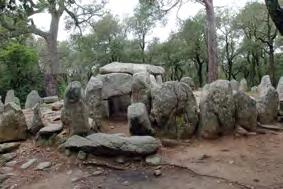
La Cerdanya Tourist Office (Cerdanya County Council)
Ctra N-260, km 179-180 – 17520 Puigcerdà
Tel.: (+34) 972 140 665 info@cerdanya.org www.cerdanya.org
Cerdanya is a region with a very special relief, climatic and historical character. Its scenic diversity and beauty are evident in every corner and enjoying them while doing sports such as hiking, cross-country or downhill skiing, mountain biking or climbing, etc. is most definitely an excellent option. The region’s towns are also home to some very notable culture: a visit to the historic pharmacy at Llívia, the Romanesque Way and its monumental sites are just some of its appeals.
Pl. Abat Oliba, s/n RIPOLL
Tel. 972 70 23 51
turisme@ripolles.cat www.ripollesturisme.cat
Everything you are looking for in a getaway close to your home with everything you need to enjoy unique experiences and authentic sensations. A territory where you disconnect from nature while enjoying an invaluable historical and cultural heritage. A territory with one of the largest concentrations of Romanesque art in Europe: almost a hundred monuments scattered throughout its 19 municipalities.
Pl. de les Escoles, 1 - 17130 L’Escala Tel.: (+34) 972 770 603 turisme@lescala.cat www.visitlescala.com
C. de l’Aigüeta, 17 - 17100 La Bisbal d’Empordà Tel.: (+34) 972 645 500 info@visitempordanet.com www.visitempordanet.com

L’Escala is a tourist destination with a broad range of activities for all the family and for every taste and need. This Costa Brava municipality offers a wide variety of high-quality experiences through which to enjoy the local culture and heritage throughout the year.
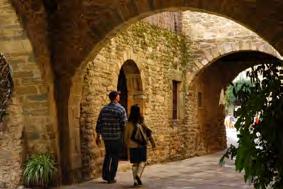
Visit Empordanet runs activities that offer the chance to share exceptional moments with local people from five municipalities in the Empordà region at its most genuine: visit the workplaces of craftspeople and artists or workshops where you can create your own items following their instructions; visit the producers of local culinary products or taste the cuisine of the Empordà. There are also guided visits upon which to learn about the history of small, charming medieval towns, the landscape of the Empordanet area and the cultural heritage of the Gavarres massif.
C. Nou, 60, 2n - 17455 Caldes de Malavella Tel.: (+34) 972 470 735 info@atri.cat www.atri.cat / www.experienciesculturals.cat
Atri Cultura i Patrimoni is a family-run company of historians and archaeologists specializing in cultural and archaeological services, in research and educational activities related to the history of the Girona region, and in cultural and archaeological tourism, especially in the county of La Selva, where we’re based. The visits, routes and cultural experiences we offer are unique, based on our first-hand knowledge and professional experience, and they’re always led by expert historians and archaeologists.

C. de Lasauca, 5 - 17600 Figueres
Tel.: (+34) 972 501 250 info@hotelduran.com www.hotelduran.com
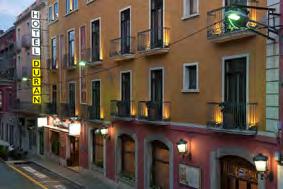
The Duran 4 star Hotel & Restaurant dates back to an old inn from 1855, which still remains within the now larger establishment. The cuisine of its restaurant is highly acclaimed in the area. It used to be a school for great chefs, headed by Lluís Duran Camps, and is still a benchmark for Catalan cuisine.
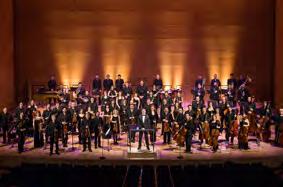
17853 Tortellà
Tel.: (+34) 620 727 199 info@giorquestra.cat www.giorquestra.cat
The GIO is the symphony orchestra of the Girona regions. True to its motto “Music in capital letters”, it is a versatile orchestra that offers quality music, opened to all styles, and has the collaboration of prestigious national and international soloists in their concerts that take place in the main auditoriums of the country.
C. d’Antoni Llopis, 6, 1r 5a - 17800 Olot
Tel.: (+34) 972 903 822 - 616 447 001 educart@educart.biz / reserves@educart.biz www.educart.cat
EducArt is a cultural and educational services company that works at museum and cultural sites throughout Girona province. Its activities, guided visits and management services notably include those it offers at the citadel of Roses, the La Trinitat castle, the port of Roses, La Jonquera Exile Memorial Museum, the MARAM - L’Escala Fish Interpretation Centre, Rafael Masó HouseMuseum in Girona, Girona Art Museum, the pharmacy of the former hospital of Santa Caterina and Girona cathedral.
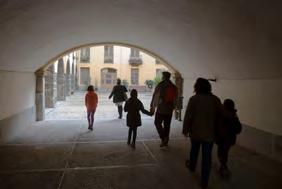
C. dels Remences, 5, baixos - 17005 Girona Tel.: (+34) 649 467 266 - 650 406 244 info@gironaexplorers.com www.gironaexplorers.com
The founders of this company from Girona are very deeply in love with their country and therefore wish to show visitors what they are like and why they are so. Girona Explorers offers an introduction with a difference to the city of Girona through its hidden-away narrow streets; exploration of mysterious forests and rivers among volcanos in Garrotxa region; and visits to the most beautiful towns in the Empordà region and to the Costa Brava’s most secret beaches. Drink your fill of the culture of Dalí, of cuisine and of Girona’s way of life.
Members of the Culture and Identity marketing club
Catexperience - ONVAIG.CAT
C. del Roser, 16, baixos - 08600 Berga Tel.: (+34) 628 707 932 hola@onvaig.cat www.onvaig.cat
Pl. de la Catedral, 8, baixos - 17004 Girona Tel.: (+34) 872 590 969 gigsgirona@gmail.com www.gigsgirona.com
Catexperience - ONVAIG.CAT wants you to enjoy local festivals and traditions in a special way. Unique and exclusive experiences for discovering intangible heritage, designed with you in the spotlight and in which you can take active part. It offers proposals for you to discover the region and its people with all five senses and to feel the thrill of the true essence of the Costa Brava and the Girona Pyrenees.
The Girona Guide Services Association organises high added value guided visits mainly to Girona and to Figueres. It also offers outdoor leisure activities or team pursuits and can see to the comprehensive management of any activity.
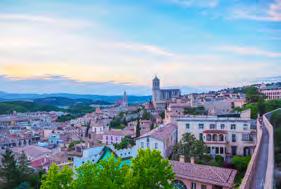

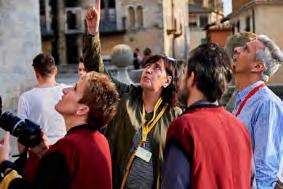
C. de Berenguer Carnicer, 3 - 17004 Girona Tel.: (+34) 972 211 678 - 674 955 805 puntdebenvinguda@ajgirona.cat www.guiesdegirona.com
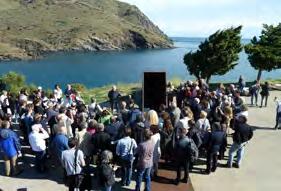
C. de Cervera, 14-16, 2on.,1a, 17497 Portbou info@passatgescultura.org www.passatgescultura.org
The team of official guides of Catalonia organises high-quality guided visits upon which to discover the natural and cultural heritage of Catalonia. Because of its long track record and tailored itinerary service, this association is the best option for learning about Girona province.
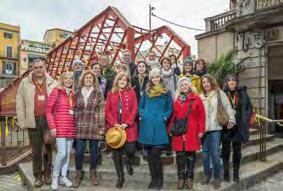
The Passatges Cultura Contemporània Association collaborates with Portbou Town Council to promote, produce and disseminate all kinds of cultural initiatives that enhance the tourism value of this border region as an expression of the country’s identity, drawing from the interdisciplinary aspects of contemporary culture and aspects specific to Portbou. It bases its activity on the figure and thought of Walter Benjamin (Berlin, 1892Portbou, 1940).
C. de Sant Antoni, 1 - Factoria Cultural Coma Cros - 17190 Salt Tel.: (+34) 686 476 222 marrecs@gmail.com www.marrecs.cat
Els Marrecs are a colla castellera, or group that forms human towers, that was founded in 1995 in the town of Salt, which is the centre of human-tower building in Girona province. They build eight-person high towers and some, in recent years, of a high standard such as the tres de nou amb folre (nine storeys with three people at each level and a second base at level two) and the cinc de vuit (eight storeys with five people at each level). Every 1 November they celebrate the season’s end with a thrilling display on the steps of Girona cathedral.
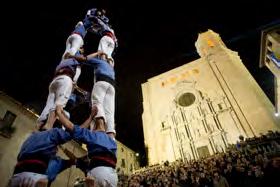


Music Festivals of the Costa Brava and Girona Pyrenees
Peralada, Cap Roig, Torroella de Montgrí, Porta
(Sant Feliu de Guíxols), Sant Pere de Rodes, Schubertíada
Coves of Begur and Palafrugell and Sant Sebastià Lighthouse
La Molina-Masella
Banyoles Lake
Mediaeval towns of Pals and Peratallada
Iberian City of Ullastret
Camprodon Valley
Valley and Sanctuary of Núria
Vila Vella or Old Town of Tossa de Mar
Gardens of the Costa Brava (Santa Clotilde, Pinya de Rosa and Marimurtra)
Old Town of Girona
Pottery of La Bisbal
Alta Garrotxa (Oix and Beget)
Garrotxa Volcanic Zone Natural Park
Cap de Creus Natural Park
Sant Pere de Rodes
Santa Pau
Besalú
Ruins of Empúries
Cadaqués
Montgrí, Medes Islands and Baix Ter Natural Park
Aiguamolls de l’Empordà Natural Park
Dalí Triangle (Museums of Figueres, Portlligat and Púbol)
Romanesque architecture
Santa Maria de Ripoll, Sant Joan de les Abadesses, Sant Quirze de Colera, Santa Maria de Vilabertran, Sant Miquel de Cruïlles
«Surf and Turf» cuisine (throughout the region)
National main road
Dual carriageway
Major road County road Local road
Under construction
Other roads River
Rack railway Motorway symbol
Motorway exit National main road symbol County road symbol
Major county road symbol
New code system
High-speed rail station
County boundary Railway
Greenway
Award granted by the European Union that recognises the quality of the waters and the services provided to users on the beaches.
Blue Flag Port
Cruise port
EMAS Eco-Management and Audit Scheme 2022
Begur: Club Nàutic Aiguablava
Blanes: Club Vela Blanes and Blanes Port
Calonge: Can Cristos - Ses Torretes cove, Torre Valentina Beach, Sant Antoni Beach, Es Monestri Beach and the town seafront promenade
Castelló d’Empúries: Empuriabrava Beach
El Port de la Selva: Club Nàutic Port de la Selva and El Port de la Selva Port
L’Escala: L’Escala Port and Club Nàutic l’Escala
Llançà: Club Nàutic Llançà and Llançà Port
Palafrugell: Port Bo, Canadell, Llafranc, Tamariu and Calella de Palafrugell Beaches
Palamós: beaches, coves, Port Esportiu Marina Palamós, Club Nàutic Costa Brava, Palamós Port, seafront promenade and urban parks
Platja d’Aro: Club Nàutic Port d’Aro
Roses: Santa Margarida, El Salatar, El Rastrell, Nova, La Punta, Els Palangrers, Canyelles-Bonifaci and L’Almadrava Beaches; Murtra, Rostella, Calís, Montjoi, Calitjàs, Pelosa, Canadell and Jóncols natural coves; Roses Cruise Port, Roses Marina, Roses Fishing Port and seafront promenade
Sant Feliu de Guíxols: Sant Feliu de Guíxols Port
Torroella de Montgrí-L’Estartit: L’Estartit Port, L’Estartit Main Beach, Club Nàutic Estartit and L’Estartit seafront promenade
Begur: Racó Beach, Sa Riera Beach, Aiguablava Beach
Castell-Platja d’Aro: Platja d’Aro Main Beach and Sa Conca Beach
Castelló d’Empúries: Empuriabrava Beach
Torroella de Montgrí: L’Estartit Main Beach
Cerdanya: La Molina Ski and Mountain Resort
Garrotxa: Garrotxa Volcanic Area Natural Park
Ripollès: Vall de Núria Ski Resort, Vallter 2000 Ski Resort

Published by
Patronat de Turisme Costa Brava Girona
Design and production
Minimilks
Translation and proofreading
Traduaction and Traduccions Link
Printed by Indústria Gràfica Montserrat, SL
Legal diposit
GI 896-2014
Texts
Xavier Carmaniu
Photography
K. Noppé, P. Sau, M. Geli, P. Planagumà, J. Renart, O. Vall, J. Gallego, Ovunno, J. Roca, A. Tremps, P. Iglesias, M. Puig, A. Selbach, P. Callís, S. Ott, D. Clemence, B. Perez, F. Mena, D. Espada, D. Borrat, J. Casanova, J. Cassu, J. M. Oliveras, I. Kenis, Hecktic Travels, O. Rodbag
Photographs kindly provided by Arxiu d’imatges PTCBG, Consorci Ripollès Desenvolupament, Ajuntament de Roses, MAC Ullastret, Ajuntament de Figueres, Fundació Rafael Masó, Lloret Turisme, Ajuntament de Verges, Ajuntament de Castelló d’Empúries, Museu Memorial de l’Exili (MUME), Grup Peralada, Temporada Alta. Festival de tardor de Catalunya. Girona-Salt, Festival Internacional del Circ Elefant d’Or de Girona, Kamaleon, Turisme Santa Cristina d’Aro, Turisme Hostalric, ©Salvador Dalí, Fundació Gala-Salvador Dalí. Figueres, 2015.

